


















































































































































































Acoustic Products

Audience Seating
Conductor’s Equipment

eplacing ing ng
Whether you’re building a new music suite or just adding or replacing equipment, the experience is always easier with Wenger.
enger. r. ays W Wenger
ching Band PMar
Marching Band Products
Ouratorsall seventyyearsofexperiencewitheduc
Music Chairs
roducts ro ching P snoother rearound theworldhasgivenusinsight
Music Stands
Ourseventyyearsofexperiencewitheduc alw r
aroundtheworldhasgivenusinsight
anmatch.Ourfocused csunderstsource nootherre rsall e anandingof match.Ourfocusedunderst
ssthatenableand and servicecustomer provideinnovative,high-valueproduct
Risers, Staging & Platforms
Sound Isolation Solutions


Ourseventyyearsofexperiencewitheducatorsall aroundtheworldhasgivenusinsightsnootherresourcecanmatch.Ourfocusedunderstandingof customerneedsallowsustoprovideinnovative,high-valueproductsandservicesthatenableand inspiregreatperformances.Todaywehavetheindustry’smosttrustedproductline,designedto enhance,empower,andemboldenmusiceducators.
sthatenableand
ools aching Tools roducts ro age orms & Platffo today! suitstimatestsyourspaceandbudget. avisionthat beto developande
Storage Products
rage P
fulnewwebsiteexperienceto furIn addition,we’vejustlaunchedapower ,andemboldenmusic educenhance, empower
Storag Platf todevelopande
Teaching Tools
Tea T
Theatre Products and More!
Inaddition,we’vejustlaunchedapower enhance,empower inspiregreatper customerneedsallowsustoprovideinnovative,high-valueproduct Pleasevisitt e!Morre roducts ro e Pheatr
odaywehavetheindustry’smosttrustedproductline,de
therenhanceyourability odaysignedto wehavetheindustry’smosttrustedproductline,de
fultherenhanceyourability newwebsiteexperiencetofur ,ators. andemboldenmusiceduc
s.odaywehavetheindustry’smosttrustedproductline,de T formanceinspireTodaywehavetheindustry’smosttrustedproductline,de greatper syourspaceandbudget.
Inaddition,we’vejustlaunchedapowerfulnewwebsiteexperiencetofurtherenhanceyourability todevelopandestimateavisionthatbestsuitsyourspaceandbudget. Pleasevisittoday!
















POSTMASTER
CMEA Magazine (ISSN 1099–6710) is published quarterly (Fall, Winter, Spring, Summer) by CMEA.
Mailing Address: 9923 Hirondelle Lane, Tujunga, CA 91042–2605. Periodical postage paid at Tujunga, CA and at additional mailing offices.
Subscription price of $4.00 is included in the CMEA annual dues. Non-member subscription rate is $12.00 per year. Single copies are $3.00
POSTMASTER: Send address changes to CMEA Magazine, 9923 Hirondelle Lane, Tujunga, CA 91042–2605
CMEA Magazine
Art Director/Business Manager: Allen Petrinka
Mailing Address: 9923 Hirondelle Lane Tujunga, CA 91042–2605
Voice: 818 353–3356
E-mail: cmeamagazine@dslextreme.com
Rates and advertising information available at: www.calmusiced.com
The Executive Board of CMEA serves as the Editorial Committee. The observations and opinions expressed in any article in this magazine are those of the author and do not necessarily represent the official position of the Association. CMEA does not necessarily endorse any product or service advertised in this magazine.
CMEA Administrative Office
Mailing Address: 2417 North 11th Avenue Hanford, CA 93230
Office: 559 587–2632 Cell: 559 904–2002
E-mail: cmea@calmusiced.com Website: www.calmusiced.com
• President’s Message: CASMEC byCMEA President Scott
• The More You Give, The More You Get by John Burn, CMEA President-Elect9
• Take Ten for Jazz by Barb Shinaver, CMEA CAJ Representative11
• Middle School Instrumental Workshop by Holly MacDonell, CMEA North Coast Section President and Judi Scharnberg, CMEA North Coast Section Past President14
• CASMEC Registration Rebate by Michael Phenicie, CMEA Northern Section President15
• CASMEC Colleagues by Rita Zigas-Brown, CMEA Bay Section President16
• Recharge and Reconnect at CASMEC by Ryan Duckworth, CMEA Southeastern Section President17
• Trending Towards Full Inclusion by Angela E. Holmes, M.A.Ed., CMEA Special Learners Representative19
• Higher Education Happenings by Dr. Lawrence F. Stoffel21
• The Value and Importance of Your Feeder School Programs by Bill Ingram, Music Educator and CMEA Hall of Fame Award Recipient 23
• Experience World Music and Cultures at CASMEC by Dr. Lily Chen-Hafteck, CMEA World Music Representative25
• CASMEC Highlights and Hot Topics by Joseph Cargill, CMEA CASMEC Logistics Coordinator29
• CMEA Awards Gala Invitation and CMEA State Award Winners 30
• 2018 CMEA Election Information and By-laws Update by Michael D. Stone, CMEA Immediate Past President31
• Candidates for CMEA 2018–2020 Statewide Offices 32
•
Ad Index u Casting A Wider
University of Colorado, Boulder24
University of Portland13 u Wenger CorporationIFC
West Music12 u Willamette University10 u YamahaMusical Instruments4

Top Row
“From the Adjudicator’s Desk: Strategies for a Superior Performance at Festival,” Band, Dr. Leo Sakomoto
“Percussion 102: Percussion Methods Revisited,” Band, Dr. Dave Gerhart
“Programming for a Small Band,” Band, Spencer Jepson
“Giving Your Students Opportunities to Succeed in Music After High School,” Band, Dr. David Betancourt
“Reading Session: Elementary School, Children’s Chorus, and Community Youth Ensembles,” Choral, Kimberly Nason Second Row
“‘Hot Cross Buns’ and So Much More! Starting Beginning Instrumentalists,” Band, Laura Smith and Jack Erb
“Adopt, Adapt, Improve: Utilizing Effective Choral Techniques in the Wind Band Rehearsal,” Band, Dr. Alyssa Cossey and Dr. Rickey Badua
“Effective Band Director Techniques for Teaching in Title I Schools,” Band, Dr. Gabriel Arnold
“Modifying Scores to Suit the Ensemble,” Choral, Roger Emerson
“ConducTED Talks,” Choral, Dr. Jenny Bent
“We Can Mend the Sky: Choral Music and Social Justice in an Age of Division,” Choral, Dr. Joshua Palkki
“Too Many Students, Too Little Time: Strategies to Maximize Teaching in the Beginning Band Classroom,” Band, Chris Watts and Anne Hendrickson Third Row
“Top Ten Tips for Directors to help their Piccolo Players Perform Their Best,” Band, Tracy Harris
“Reading Session: Easy High School SATB, Middle School/Junior High, and Show Choir,” Choral, Bill Zinn
“Essential Ingredients for a Successful Secondary Choral Program: Committing to the Process,” Choral, Amanda Isaac and Dr. Angel Vazquez-Ramos “Inside-Out Conducting: Uncovering Your Unique Conducting Style,” Choral, Dr. Buddy James
“New Concepts in Sight Reading: Training Musicians to Read and Play Music Through a Holistic Pattern Recognition,” Orchestra, Winifred Crock
“PLAY: Seven Ways to Engage Your Orchestra in Improv,” Orchestra, Dr. Janine Riveire
“Strategies for Improving Playing Position; Flexibility In Your Orchestra Students,” Orchestra, Pamela Tellejohn Hayes
“American Self Portrait, American Selfie,” World Music, Dr. Michael Albertson “Road to Improvisation,” General Music, Brian Burnett Fourth Row
“WHAT? I’m teaching CHOIR?!” Choral, Rachelle Randeen
“A String Player’s Left Hand: A Look at Intonation, Shifting, and Vibrato,” Orchestra, Stephen Moore
“Creating Intonation on the Fingerboard,” Orchestra, Dr. Laurie Scott and William Dick
“Explore the Sonic World of Baroque Music and Period Instruments with Philharmonia,” Orchestra, Lisa Grodin “Recorder for 4th/5th Grades,” General Music, Jim Solomon
“Connecting with the Profession,” Collegiate, Dr. Dennis Siebenaler
“Creating and Composition with Technology in the Classroom: What’s New?” Professional Development, Dr. Christine M. D’Alexander and Dr. Lisa A. Crawford
“Rich Pedagogies: Performing, Improvising, and Composing with Popular Music,” General Music, Dr. Judy Lewis Fifth Row
“Australian Music beyond the Kookaburra Song!” General Music, Emma Joleen
“Building Social-Emotional Skills Through Songs of ETM,” General Music, Janet Thorgrimson, Cindy Teresi and George Dozet
“Can Special Education Students Succeed in High School Instrumental Music? You Bet!” Special Learners, Julie Duty “CMEA Mentorship Program,” Professional Development, Mark Nicholson
“Every Day for Every Student – What We’ve Learned About the Power of Music Education Through the Music Immersion Experience Program,” Professional Development, Samantha Theisen
“Grade Two Demonstration Lesson,” General Music, Dr. Miriam B. Factora
“Let’s Dance! - The General Music Meeting,” General Music, Stephanie Tomicich, Julie Haydon and Richard Lawton Sixth Row
“Designing a Music Technology Curriculum,” Technology, John Mlynczak
“Don’t Burn Out! Ideas and Techniques for a Lasting Career as a Music Educator,” Professional Development, Giovanni Santos
“Emerging Practices in School Music Education: Technology Projects that Inspire,” Professional Development, Frank Heuser and Tamara Thies
“Integrating Music Across the Elementary Curriculum,” Professional Development, Jennifer Trujillo
“Music in the Moderate/Severe Classroom,” Special Learners, Darci Gibson
“Musical Instruments from China,” World Music, Dr. Jing Song
“One of These Things Is Not Like The Other,” Professional Development, Neil Anderson and Stacy Harris
“Organized Enough?” Professional Development, Ryan Duckworth Seventh Row
“Making the Intangible Tangible: Teaching Students to Identify Opportunities for Expressivity and Musicality in Notation-Centered Musical Practice,” Orchestra, Dr. John Burdett
“Let’s Shake to the Music: Bringing the Music and Culture of Cuba to the Classroom,” World Music, Keith Cerrato
“Teaching Music in Inner City Los Angeles,” Professional Development, Dr. John Lee Whitener
“Music Curriculum Modification Strategies for English Language Learners,” Professional Development, Dr. John Eros
“Music Education Through Music Composition and Technology: A Constructivist and Creative Approach to Music Education for All Students,” Professional Development, Anne Fennell
“Stronger Together; They’re Not Mine, They’re Not Yours, They’re Ours,” Professional Development, Dr. Jermie Arnold
“The Brain and Music Education 101,” General Music, George Dozet
“The Fingering Continuum for Guitar,” Professional Development, Dr. Steven M. Kinigstein
“The Music Within 2.0: Best Practices and Strategies for Students with Special Needs,” Special Learners, Julia Hahn
“The Power of Position Playing and Proper Technique: Maximizing the Guitar Experience,” Professional Development, Nick Toque Eighth Row
“Practice, Performance, Creativity, and Assessment with MusicFirst,” Technology, Jenny Amaya
“Special Education: Reviewing the Basics,” Special Learners, Angela Holmes
“Small School Problems: Solutions for Rural and Small School Secondary Teachers,” Professional Development, Maria Carney
“Can Singing Traditional Songs Increase the Level of Cultural Understanding Among Children? A Cross-Cultural Study on Children in Brazil, Canada, China and Kenya,” World Music, Dr. Lily Chen-Hafteck
“Stimulate, Participate, and Motivate: Engaging all Students in the K–6th Grade, Thirty-Minute Music Class,” General Music, Jennifer Giustino
“Whatever It Takes: Building a Successful Music Program in a Title I School,” Professional Development, Sarah Moulder and Dr. Matthew Arau
“World Music Pedagogy for Band: A Practical Introduction to the Process,” World Music, Christopher Mena
“Young Composers Performance and Composition Clinic,” Professional Development, Julie Bounds
“Your Elementary Choral Toolkit: Technique, Technology, and Transformation!” Professional Development, Graham Hepburn
Bottom Row
“Using New SmartMusic to Guide Student Deliberate Practice,” Technology, Leigh Kallestad
“What if I Don’t Want to Teach?: CMEA for Performers, Composers, Producers, and Advocates,” Collegiate, Lauren Culley
“Using Popular Songwriting to Ignite Creativity in Music Students,” Professional Development, Dr. Scott Jeppesen
“Zero to Concert in 48 Hours: Strategies for Success with Honor Bands,” Band, Travis J. Cross
“Working With Performance Anxiety,” Professional Development, Michelle Jamieson




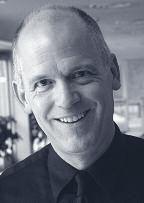
by ScottHedgecock CMEAPresident
As I have begun all of my articles in this journal to you with a word and a definition, I thought it fitting to present my last article to you as your president in the same manner. However, when I found myself wanting to talk more about our wonderful CASMEC, I found that the definition of a conference was rather lackluster.
noun • a formal meeting in which many people gather in order to talk about ideas or problems related to a particular topic usually for several days
While the definition of the word conference may be somewhat lackluster, our conference –the California All-State Music Education Conference –is quite the opposite. I encourage you to check out the CASMEC promotional video by visiting CASMEC.org to get you excited about what is in store for all of us.
Each of our partner organizations has put together fantastic strands of sessions and performances that deal with their specific areas of interest: choral, band, orchestra, and jazz. And CMEA has outdone ourselves this year as we present sessions in the overarching areas of creating and composition, general music, elementary music, special learners, urban and rural schools, world music, and so much more.
You will be educated, you will be enriched, and you will be enthralled by all that CASMEC 2018 has to offer. Make sure you are part of the event. We will also have a grand opening night event that brings all attendees together at the same time to hear our keynote speaker, Dr. Tim Lautzenheiser, who will inspire us, and the phenomenal a cappella group Filharmonic, who will feed our artistic ears and souls to get us started on our journey together. All conference attendees and the California honor ensemble students will join together for this opening event to CASMEC 2018.
CMEA has a few special moments of our own planned for you, in which the body of membership can come together to learn, celebrate, and prepare for the future. Please note the following CMEA events at CASMEC:
CMEA State Council Meeting –the annual gathering of the true leaders of CMEA. The state council includes your executive board and staff, the board of directors, leaders of our partner organizations, our NAfME division and national leaders, and the true “boots on the ground” leaders, our representatives, who work tirelessly to plan our events and provide ongoing professional development and support in our areas of specialized interest. The meeting is open to all CMEA members to join in the gallery to hear about the workings of CMEA.
CMEA General Assembly –our annual “we are family” gathering to learn about the accomplishments of CMEA during the past year, the cur-


rent goals, and our future plans. I will present a “State of the State” to you, and our NAfME President Denese Odegaard will bring you a “State of the Nation” address. We will also be joined by Western Division President Russ Sperling, one of our own CMEA past presidents, and JJ Norman from the NAfME staff, who will also be working with our collegiates and holding down the NAfME booth in the exhibit hall.
One of my favorite gatherings is always the CMEA Gala Awards and Banquet. A joyful evening where we share a meal together and celebrate our colleagues who have been nominated by the membership for their outstanding work throughout the breadth and depth of CMEA from within all of our sections. Please plan to join us for these special CMEA events.
Both CMEA and NAfME have been working with intention to chart the course of our future leadership. From promoting outstanding members to state and national prominence in leadership, to making sure that the door to service leadership as part





of a lifelong teaching career is clearly open to our youngest members, we are working hard to bring both the brightest and best into leadership. At the same time, we are being intentional in our efforts to continue to follow the IDEA Concept of Inclusion, Diversity, Equity, and Access, to ensure that the future leadership of our organizations also represents the voices, faces, and cultures of our student populations. This is one of our long-game efforts, and I promise that we will continue to work in this area for many years to come.
CMEA continues to lead the way in music and arts education advocacy. Our legislative successes in Sacramento are now coming to reality as our VAPA State Standards have begun the writing process. CMEA, along with the leaders of our fellow 4 Arts Ed Organizations in dance, theatre, and the visual arts, will monitor the process and continue to provide input during the four writing sessions in Sacramento.
Our SU4M Advocacy Day will be held on Thursday, May 17, 2018, at the state Capitol in Sacramento. We will be speak-








ing out on our legislative priorities and policies in a very public manner. Participation is open to all CMEA members who would like to join us.
…a few final thoughts…
As you read this, there will be only about two months left in my tenure as your president. To use the cliché “how time flies” would be an understatement. It seems like just yesterday I was anxiously awaiting the opportunity to begin my term. It has been an honor to serve you, not only as president, but also for the past fourteen years in leadership at the section and state levels. CMEA is a much stronger organization than when I first started my journey with you, and I am proud to have had the opportunity to play a part in our collective work together.
Thank you for trusting me to serve you for all of these years. We are in good hands as President-Elect John Burn takes the lead, and I look forward to serving another two years as your immediate past president... another new beginning.
Humbly,


































1947–1949
Clarence Heagy Fresno
1949–1951
Elwyn Schwartz
1951–1953
George F. Barr
1953–1955
Fred Ohlendorf Long Beach
1955–1957
Harold Youngberg Oakland
1957–1960
Joseph W. Landon Fullerton
1960–1962
Douglas Kidd
1962–1964
Gibson Walters San José
1964–1966
Keith D. Snyder Davis
1966–1968
Kenneth D. Owens
1968–1970
Judd Chew Sacramento
1970–1972
Anthony L. Campagna Foster City
1972–1974
Louis Nash La Crescenta
1974–1976
Marlow Earle Lakewood
1976–1978
Mary C. Reed Elk Grove
1978–1980
Henry Avila Monterey
1980–1982
Charles L. Freebern San Diego
1982–1984
David S. Goedecke Stockton
1984–1986
Vivian M. Hofstetter Bakersfield
1986–1988
John L. Larrieu Portola
1988–1990
L. Leroy Roach Walnut Creek
1990–1992
Carolynn A. Lindeman Greenbrae
1992–1994
Bill Adam Roseville
1994–1996
Don Doyle Pasadena
1996–1998
Jay D. Zorn La Crescenta
1998–2000
Dennis L. Johnson Salinas
2000–2002
George DeGraffenreid Fresno
2002–2004
Sam Gronseth Paradise
2004–2006
Rob Klevan Pacific Grove
2006–2008
Cheryl Yee Glass Danville
2008–2010
Jeff Jenkins Chula Vista
2010–2012
Norman Dea Walnut Creek
2012–2014
Russ Sperling San Diego
2014–2016
Michael D. Stone Bakersfield
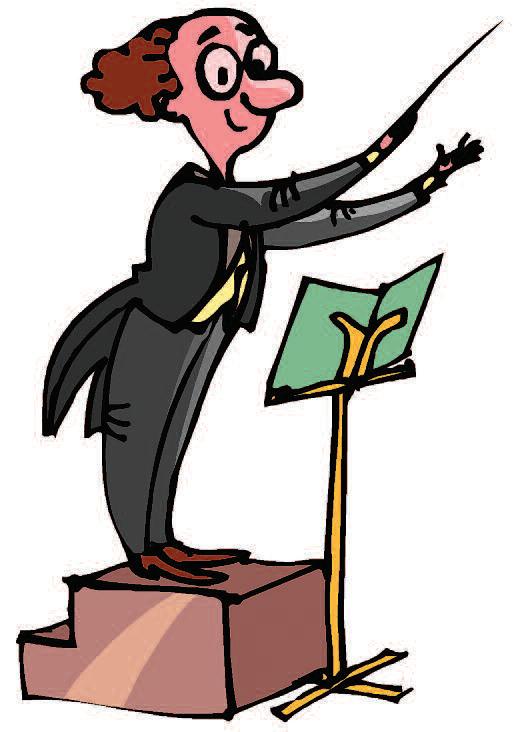
CMEA
Hall of Fame Award Recipients Honoring Lifetime Achievement in Music Education Award
Dr. Michael Corrigan, 2017; Dr. Edward Harris, 2017; James Mazzaferro, 2017; Dr. Robert Halseth, 2016; Rose Marie Krovoza, 2016; Rick Meyer, 2016; Dale Anderson, 2015; Ann Marie Haney, 2015; Dr. Thomas Lee,2015; Jon Christian, 2014; Orrin Cross, 2013; Gerald E. Anderson, 2012; Gayanne Korkmazian, 2012; Dr. David Whitwell, 2011; Nicholas Angiulo, 2010; Vincent Gomez, 2010; Robert W. Lutt, 2009; Kem F. Martinez, 2009; Carl W. Schafer, 2009; Terry Summa, 2008; Duane Weston, 2008; John Larrieu, 2007; Barbara Cory Black, 2007; Bill Ingram, 2007; Mary Val Marsh, 2007; Carolynn A. Lindeman, 2006; Joe Foster, 2006; Paul Shaghoian, 2006; Frances Benedict, 2005; L. Leroy Roach, 2005; Silvester McElroy, 2005; Jerry Kirkpatrick, 2005; Robert Greenwood, 2004; Arthur Huff, 2004; Lyle Stubson, 2004; Lois Vidt, 2004; John Farr, 2003; Thomas Eagan, 2003; Larry Johnson, 2002; Mary Louise Reilly, 2002; William Hill, 2001; Helynn Manning, 2001; Wesley “Colonel” Moore, 2001; Vivian Hoffstetter, 2000; F. John Pylman, 2000;Lawrence Sutherland, 1999; Chuck Schroeder, 1998; Dean Semple, 1997;Burl Walter Jr., 1996; Jerry Moore, 1994; Mike Pappone, 1992; David Goedecke, 1991; Marlowe Earle, 1987; Arthur Dougherty, 1985; William Burke, 1983; Aubrey Penman, 1981;Steve Connolly, 1979;Howard Swan, 1977; Russell Howland, 1975.
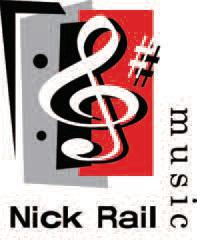

Janet Galván DIRECTOR OF CHORAL ACTIVITIES
Christopher Hughes DIRECTOR OF BANDS


Octavio Más-Arocas DIRECTOR OF ORCHESTRAS
Mike Titlebaum DIRECTOR OF JAZZ STUDIES
Coming in 2018 ASSOCIATE DIRECTOR OF BANDS
Application Deadline: December 1 ithaca.edu/music

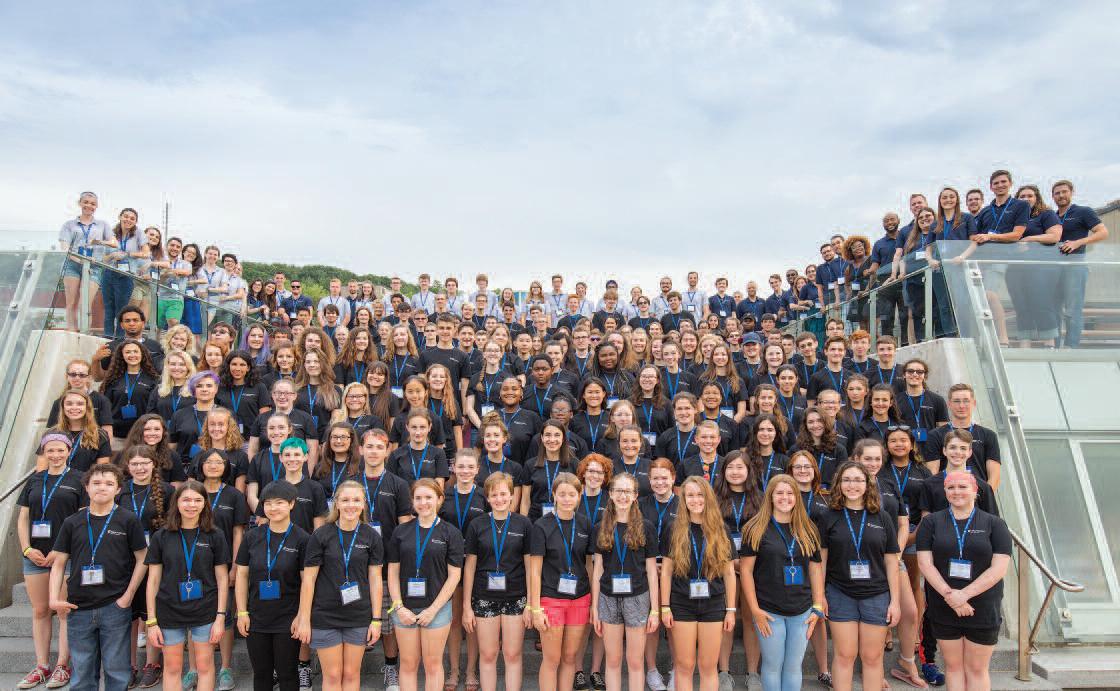
Entering grades 10–12
Entering grades 7–9 Orchestra, voice, wind ensemble, and jazz programs Band, orchestra, and musical theatre programs
Registration Opens: December 1 Learn more at ithaca.edu/sma
CMEA EXECUTIVE BOARD
CMEA President Scott Hedgecock shedgecock@calmusiced.com 714 626-3984
CMEA President-Elect John Burn jburn@calmusiced.com 408 522-2541
Interim CMEA Vice President Mario Sebastian mariohsebastian11@gmail.com 916 802-7968
CMEA Secretary Sandra Lewis slewis@calmusiced.com 408 806-5550
CMEA Immediate Past President
Michael D. Stone meuph@att.net 661 631-4810
CMEA OFFICE
cmea@calmusiced.com 2417 North 11th Avenue Hanford, CA 93230 559 587-2632
CMEA Executive Administrator Trish Adams cmea@calmusiced.com 559 904-2002
CMEA Legislative Advocate Lynne Faulks consultLF@gmail.com
SECTION PRESIDENTS
CMEA Bay Section President Rita Zigas-Brown rzigas.brown@gmail.com 925 944-6840 x8622
CMEA Capitol Section President Joshua Luedtke Jluedtke86@hotmail.com 916 214-5674
CMEA Central Section President Bill Wilkinson bwilkinsoncmea@gmail.com 559 816-6141
CMEA Central Coast Section President Christy Latham clatham@sccs.net
CMEA North Coast Section President Holly MacDonell hollymacdonell@gmail.com 707 499-1399
CMEA Northern Section President Michael Phenicie phenicie@frontiernet.net 530 458-21561
CMEA Southeastern Section President Ryan Duckworth Ryan_Duckworth@cjusd.net 909 856-5777
CMEA Southern Border Section President Laura Smith lsmith11@sandi.net 619 246-0092
CMEA Southwestern Section President Dr. Alexander Koops akoops@apu.edu 626 815-6000 x3583
NAfME OFFICERS
NAfME President Denese Odegaard 1806 Robert Fulton Drive, Reston, VA 22091 800 336-3768
NAfME Western Division President Russ Sperling sperlingruss@gmail.com
COUNCIL OF REPRESENTATIVES
CMEA/CCDA Representative Dr. Rob Istad robert.istad@gmail.com 562 822-5952
CMEA/CCDA Choral Leadership Academy Coordinator Willow Manspeaker wmanspeaker@stevensonschool.org 831 625-8339
CMEA CAJ Representative Barbara Shinaver barbshinaver@gmail.com 559 451-4320
CMEA CASMEC Coordinator/CMEA Representative on the CBDA Board Joseph Cargill cargill.joseph@gmail.com 559 474-3064
CMEA CBDA Representative Adam Wilke awilke75@sbcglobal.net 510 471-2510 x60216
CMEA CODA Representative Bill Harrington billharrington@sbcglobal.net 510 507-9738
CMEA Advocacy Day Performance Coordinator Jeremiah Jacks jeromejacks30@gmail.com 530 417-7021
CMEA Advocacy Day Public Relations Coordinator Mario Sebastian msebasti@egusd.net
CMEA Advocacy Representative Steve Venz stevenvenz@yahoo.com 714 966-4000
Collegiate Council Chairperson Riley Pate rileyelizabethpate@gmail.com 951 205-1805
CMEA Collegiate Representative Dr. Dennis Siebenaler dsiebenaler@fullerton.edu 657 278-3510
CMEA Creating and Composition Representative Dr. Lisa A.Crawford lisacrawfordmusic@gmail.com 310 863-6422
CMEA CTA Liaison Nora Allstedt nallstedt@gmail.com 559 592-9421
CMEA Elementary Representative Coralie Prince coralie.prince@gmail.com
CMEA General Music Representative Richard Lawton richard@richardlawtonmusic.com 323 654-4401
CMEA Higher Education Representative Dr. Lawrence F. Stoffel stoffel@csun.edu 818 677-3160
CMEA IN-ovations Representative Anne Fennell annefennell@mac.com 760 310-2392
CMEA Membership Chairperson Ryan Clippinger Ryan_Clippinger@kernhigh.org 661 854-5561 x70701
CMEA Mentorship Program Chairperson Mark Nicholson mnicholson@sandi.net 858 256-2702
CMEA Music Supervisors Representative Phil Mortensen pmortensen@pylusd.org 714 986-7024
CMEA Music Technology Representative Tamara T. Thies, Ph.D. tamara.thies@csulb.edu
CMEA Research Representative Dr. Ruth Brittin rbrittin@pacific.edu 209 946-2408
CMEA Retired Members Representative James Mazzaferro jmazz1@surewest.net 916 690-1992
CMEA Special Learners Representative Angela Holmes Holmesangie@yahoo.com
CMEA Special Projects Representative Russ Sperling sperlingruss@gmail.com
CMEA State Band and Orchestra Festival Coordinator Keith Johnson keith@echsbands.com 510 231-1437 x26418
CMEA State Choral Festival Coordinator Nancy Ludwig nancyludwig6@gmail.com 626 443-6181 x5895
CMEA State Solo and Ensemble Festival Coordinator Cheryl Yee Glass cglass@srvhs.org 925 552-3044
CMEA Tri-M Representative Troy Trimble troyatrimble@gmail.com 714 626-3975
CMEA Urban/Rural Schools Representative Stacy Harris sharris1@ggusd.us 714 663-6363
CMEA World Music Representative Dr. Lily Chen-Hafteck lhafteck@ucla.edu 310 825-4668
by John Burn CMEA President-Elect
The more you give, the more you get. When students practice music, they get better at it. As students improve, they get to play more challenging music. As they keep practicing, they might become section leaders. Section leaders learn more by teaching and coaching, not just about music, but about the skills we need to be successful in life, such as being responsible and how to truly work well with others. The more you give, the more you get. The more you get, the more you give back, and then you get even more; an upward spiral of excellence. This is one of the tenets I learned from leadership consultant Scott Lang, and it’s something I reinforce with my students regularly.
The same is true for us as music educators. Perhaps, first you give to the profession by hosting a festival, or helping run a regional honor group or conference. You meet amazing people, you learn from them, and before you know it, you become a board member of one of the many music education boards doing great work across the state. You meet more amazing people and you gain more wisdom that helps you connect and achieve with your students, and thus, the upward spiral of excellence.
The message is participate, help out, volunteer, give of yourself to the profession, and in doing so, you will get more out of those experiences.
Here are some statewide CMEA opportunities to give and get more as a music educator in California:
Participate in CASMEC, the California All-State Music Education Conference, in San José, February 15–18. Attend concerts, not just the amazing all-state honor bands, choirs, and orchestras, but also the amazing ensembles of all kinds that have earned a performance opportunity at CASMEC. Learn from some of the best guest speakers in our profession. Dr. Tim Lautzenheiser will be speaking Thursday night. Explore the exhibit hall to learn about amazing resources and opportunities to share with your students. Perhaps the most important thing to do at CASMEC is to relax, connect, and even commiserate with your fellow music educators. I have gained just as much wisdom from my peers at conference social events as I have at any interest session.
Participate in the Casting a Wider Net Conference at Azusa Pacific University on April 21, 2018. This conference is about expanding pathways for lifelong music mak-

ing and providing relevant music education for all of California’s students. In a healthy secondary school music program, about twenty percent of students are in band, orchestra or choir, yet every student deserves music education. Learn ways to “cast a wider a net” so that more students can “give more and get more” music in school. Whether it’s ukulele, mariachi, technology or embedding composition, this conference promises to truly impact your teaching.
Participate in CMEA by supporting our advocacy efforts. Your membership makes the following possible:
The NAfME office in Reston, Virginia –only minutes away from Washington D.C. –played a significant role in insuring that music was specifically listed as part of a well-rounded education in the “Every Student Succeeds Act.” These same folks are now working tirelessly on our behalf ensuring that music and arts education remains in education policy discussion even in the current unpredictable climate in our capitol.
In California, CMEA leadership meets weekly with our lobbyist, and meets monthly with leaders from the other arts education organizations, as we consistently make our presence known in Sacramento. In January, the Stand Up 4 Music Coalition, made up of twelve different music education associations in California, meets to set priorities for our Stand Up 4 Music Day on May 17, 2018. At Stand Up 4 Music Day, representatives from these organizations meet with state legislators in the Capitol building, while outside on the Capitol steps, a variety of wonderful school ensembles performs. The event culminates with guest speakers at a press conference on the steps of the Capitol.
We would love to see you at Stand Up 4 Music Day, however, if you can’t make it, be assured in knowing that your membership dues make this all possible. With that in mind, you could make a significant impact to increasing what CMEA and NAfME offer by encouraging your colleagues to join CMEA. There are thousands of music teachers in California that are not yet CMEA members. The potential is exciting. If everyone reading this right now was able to get one new person to join, our capacity to serve our mission could double. Give more; get more!









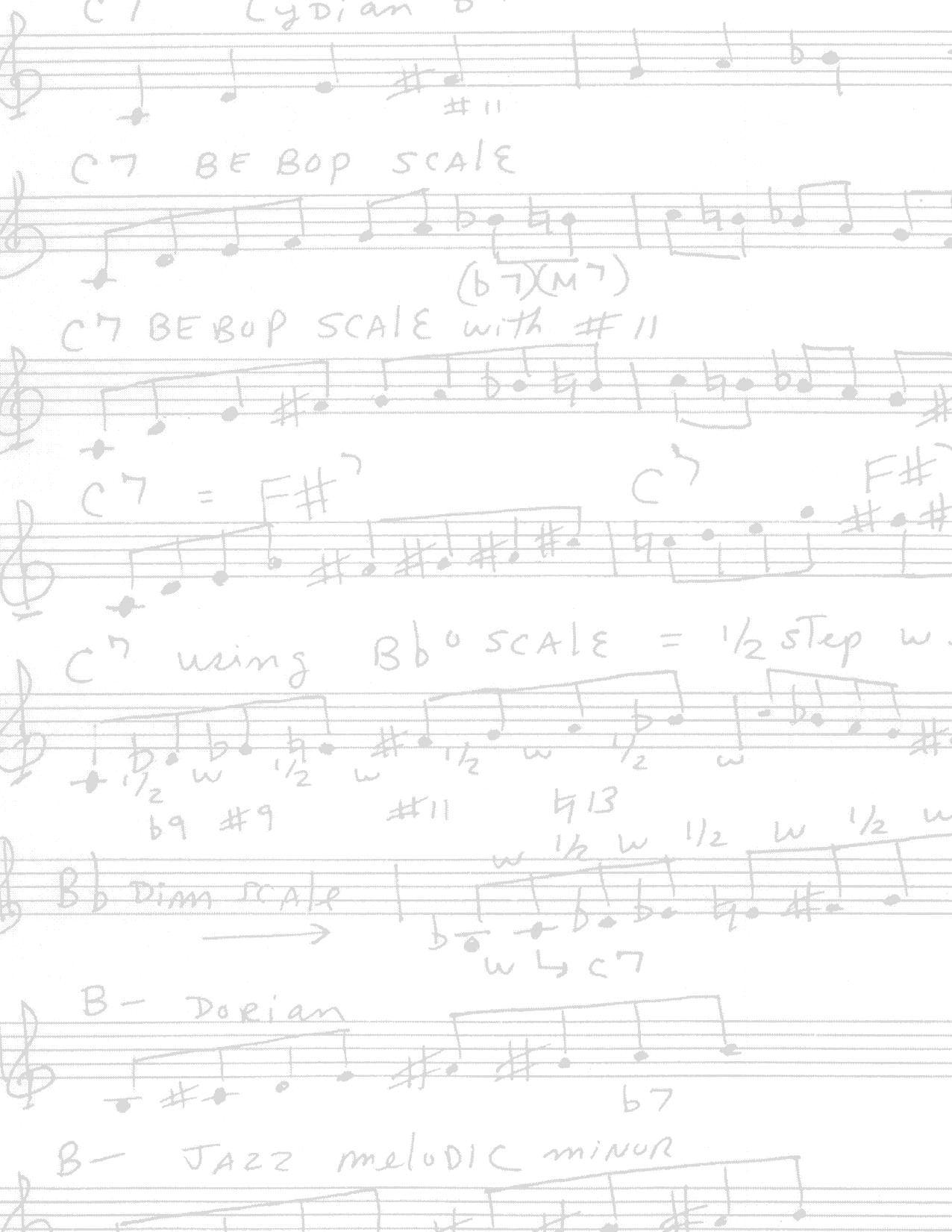


by Barb Shinaver CMEA CAJ Representative
s music teachers, we will never have more time than we have now. Something will always require our attention away from our curriculum planning, so we can’t honestly expect to “wait” until we have time. Not to mention, simply based on comfort level, the parts of our jobs that we have less background knowledge to bring to the table will often get moved aside in crunch time. What can we do to combat all of this? How can we carve out time for our own growth on our “weaknesses”?
Our standards dictate that instruction and student experience in improvisation, musical creation, and tangible access to different genres and styles of music are incorporated into our curriculum. We owe it to our students to offer jazz in schools to build well-rounded musicians. When we should be trying to add jazz into the curriculum, what is preventing that from being realized? It might be ten minutes a day, or even as small as ten minutes over the course of the week. Maybe it’s ten dollars you use for incentives, or ten students that you talk to over ten days about joining the band or checking out new jazz music. You would be surprised how far a small amount of time or specific achievable goal can go for you and your burgeoning jazz program. Let’s put our heads together to see what us band directors can do in baby steps for our jazz programs.
Below is a list of topics that you can check out to get your “wheels turning”
on jazz advocacy and education for you and your students.
What is the status of your program? How does jazz instruction fit into your five-year plan? Is there a way for you to start a jazz band on your campus? If you already have a jazz ensemble, what might you be in need of to keep it moving forward? Take ten minutes one day to consider options for growth and progress for your jazz ensemble. List ten things that you would need or that you have questions about.
Recruitment
Get students excited about jazz. Reach out to gigging musicians in your area to see if you can set up a live demonstration/performance. Speak with other directors who have developed jazz programs in your area or in an area with a similar socio-economic demographic. Take ten minutes over the course of the week in your class to show a two-minute live clip of WDR Big Band (constantly updated Facebook and YouTube) or YouTube video of Snarky Puppy –something current to get them engaged and excited. Show them history, videos in black and white with famous songs they may have once heard or jazz musicians that might ring a bell. What if you could get ten of your middle school (or elementary school students if you are a junior high teacher) to commit to participating in your jazz program the following year during your recruitment efforts?
What are you offering your students? Are you respecting their time? Do they have a reason to stay around, or leave? How can you keep those ten students you got to commit last year to stick around this year? Bribery is not a shameful thing, especially if you are in a situation where you are establishing a program for the first time. When I restarted the jazz program at Computech Middle School in Fresno after a decade of its absence, we met as a club after school. On Fridays I gave them candy or stickers after rehearsal. Ten minutes and ten bucks to go to the store went a very long way.
You may be freaking out –how do I teach jazz? Well, if you’re already a music teacher, you can already teach it. On the most basic and straightforward level, jazz is like concert band with differently styled eighth notes (depending on the music you play.). It sounds silly to say, but music is music and you are more adept to rehearse this ensemble than you may feel like. You can cover the majority of concepts by interpreting notes and rhythms on the page in front of you, by making your band sound good from the most basic standpoint. When picking literature for your jazz band, consider what you normally would for your concert band, orchestra, or choir. What is the reality of your instrumentation? Who are your strong section, or sections that need more love and time for growth? What level of
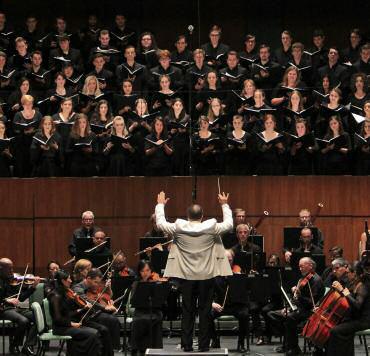
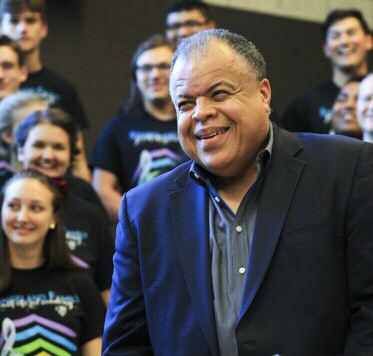




complexity (grade-wise) would you typically program? Have no shame in subtracting a grade level or half in order to incorporate the stylistic and improvisational aspects of this genre. That will add a slight bit more complexity to your rehearsals than you might otherwise be used to. Find ten charts you would be interested in diving into that meet these requirements for your program –depending on how fast you move, you may have just done your homework for the next couple of years. Additionally, listening to jazz artists and ensembles related to your programming will help both you and your students achieve this with the knowledge you have at your fingertips. Perhaps for a while you stick to pieces of music you can find a good source recording of, and have you and your students do your “ear-homework” on it. Take ten minutes to research jazz artists, or pick ten musicians to check out alongside your students from Jamey Aebersold’s list found free online. YouTube is an underutilized service (and free). There are many grooves and backtracks available, in addition to improv lessons and videos teaching basic style concepts for you and your students alike. Find ten videos on YouTube for you and your band to check out to help.
Information
I need more help. What else can I do with this group? Check out Mike Kamuf’s website and grab his Warm-Ups for De-

veloping Jazz Ensembles from the free resource section. This free packet contains nine four-bar “jazz chorales” of ii-V-I progressions, three variations on a chromatic scale, articulation exercises (for style), calland-response (with written call-and-response ideas for the director) and rhythm exercises. Once you’ve taken your band through those exercises, you could riff off that material in many different ways. Make a list of ten small additions you could make to your warm-up routine that can give your students and yourself a fresh perspective. Ideas include: Dynamic shapes on chorales, chromatic octaves starting from every note, various call-and-response rhythms, having students provide call-andresponse rhythms, or reading rhythms from your concert band music played in swing or with latin grooves. Other great warm-up cycles to check out are Steve Owen’s Jazz Builders for intermediate groups and Bug’s Bower Complete Rhythms for more advanced groups.
When students have the opportunity to perform what they have learned for reallife people, both you and they can see what level of information retainment and execution they truly have at their fingertips. Set up ten performance opportunities both big and small for your students throughout the course of the year. This can include performing for a staff meeting after school, playing at open house or back-to-school
night, playing a community or school event, performing for a fundraiser for your program, or simply setting up in the middle of campus to perform for the school during lunchtime or after school.
Clinic
Please do not hesitate to ask for help and reach out. Both you and your students will benefit from bringing in an outside voice, not only to provide information you may have missed, but to bring fresh reiterated information (always helps to hear the same thing from someone else.). If you do not know who to ask, or do not have the means to bring out a clinician, please do not hesitate to contact the California Alliance for Jazz for assistance. Through CAJ, we can connect educators in the state of California not just to each other, but to experts in the field in order to get assistance with your programs. Check out cajazz.org for more information.
And finally, here’s a list from Les Nunes (jazz director, Clovis High and Clark Intermediate in Fresno) of only five things you and your students need to do in order to enjoy success in your jazz program.
Listen –to the masters.1
Write it down –during rehearsal, if you’ve2 learned something.
Practice it –outside of school.3
Perform it –any chance you get.4
Teach it –to others to see how well you5 know it.
Located minutes from downtown, the University of Portland combines personal attention with challenging academics in our nationally accredited music program.

INTIMATE CLASSES. INNOVATIVE PROGRAMS. OUTSTANDING ENSEMBLES.
Now offering a pre-music education track to prepare you for a Master of Arts in Teaching.
ENSEMBLES
University Singers • Wind Symphony • Orchestra • Women’s Chorale Jazz Ensemble • Vocal and Instrumental Chamber Music
2018 SCHOLARSHIP AUDITION DATES
Monday, February 19 • Saturday, February 24 and March 3
FOR MORE INFORMATION up.edu/music
UPMusic@up.edu 503.943.7228
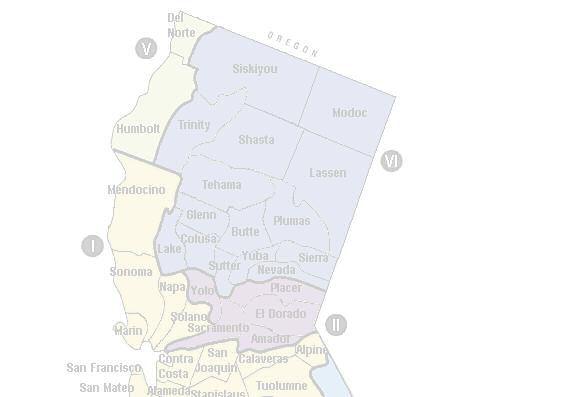
by Holly MacDonell, CMEA North Coast Section President and Judi Scharnberg, CMEA North Coast Section Past President (2011–2015)
One of the biggest challenges of working in a rural schools area is connecting students with private band and strings teachers. Our geographical area is about the size of Connecticut with a population of about 80,000. Arcata has the Humboldt Music Academy connected with Humboldt State University and approximately 180 students take classes and lessons there, but most are within a ten-mile radius. And while the Academy offers scholarships, not every family has the opportunity to participate.
There are a few full-time positions in the more urban parts of the county like Eureka and Crescent City, but they are not the norm. There are few full-time music teaching positions in the more rural areas. Just like bigger programs, though, teachers trying to implement a program containing a variety of options like band, strings, choral, and general music classes, must try to be specialists in each area while only teaching part time.
The CMEA North Coast Section wanted a day especially for middle schoolers in which specialized training on specific instruments was provided. The hope was that if it takes place in the fall, the only time of year there arenʼt a ton of other events happening with which to conflict, students could get a head start on some practical techniques gained from instrumental specialists. Clarinetists could get help navigating “the break,” string players could get a head start on vibrato and shifting, and percussionists could be coached by an actual percussionist (we all try, but only a trained percussionist really knows how to percuss).
This is where the Middle School Instrumental Workshop comes in.
Three years ago we held a “Middle School Music Is Instrumental Workshop” on a Saturday in November for students in grades 6–8. The focus was on instrument-specific clinics and the chance for students from all over Humboldt and Del Norte counties to spend a day making music together. All teachers bringing students had to participate as clinicians and/or organizers. We hoped for 30 participants and got 70.
Last year we held a “Real Men Sing” clinic for male voices from grades 5–12, as well as college, and had about 40 participants.


In order to better jump start the year, we held it in September. We had about 50 participants, charged $5.00 to cover the cost of snacks and participation certificates. Again, the hosting school charged no fees, clinicians were volunteers and included faculty from College of the Redwoods as well as HSU and members of the Eureka Symphony Orchestra. Student survey feedback in all cases was ecstatic. We plan to hold a second vocal clinic in early January for all grade 5–12 choir members.
While this does not take the place of ongoing private lessons, students can take their improved skills back to their schools and spread their enthusiasm and joy of music making as a personal advocacy for their program.
The Saturday started at one of our local middle schools at 9:30 a.m. with check-in and each student finding the correct room. We convened at 10 a.m. for an hour and a half of large-group work. Winds met together with percussion, and strings all met together. Two other string teachers and I worked with strings on some simple open string chorales. After a short break where snacks like granola bars and juice boxes were provided, students met in their own instrument groups for more specialized training. Working with violins and the one viola student, I worked on more of the chorales and vibrato technique.
After lunch (students brought their own lunches) there was more instrument-specific practice. After one more break, the larger groups met again. The winds and percussion were successful with putting a simple piece together. The strings worked on a piece also, but had more difficulty putting it together. While there were about 20 wind students, there were fewer than 10 string students and they had fewer skills to begin with.
At 3:45 p.m. the groups finished up with a run-through of what they had been working on. The organizers had envisioned the opportunity to combine the winds and strings, or share each groupʼs performance, although the strings didnʼt quite get to performance quality with their piece.
After the day was over, we asked the students to fill out a survey that asked questions about learning new techniques and if theyʼd participate again. All of the surveys were positive and results were that the students would want to attend again. Success!
by Michael Phenicie
CMEA Northern Section President


In the CMEA Northern Section, our board of directors has been trying to find ways to encourage more music teachers to attend our wonderful CASMEC. We started several years ago by offering to pay the registration fees for music majors at Chico State University, and last year, seventeen accepted our invitation and went to San José. This year, in addition, we decided to extend that to current music teachers who have not yet attended CASMEC. As long as they join CMEA, they can apply for a $50 refund of the cost of their registration, and we will allow up to ten teachers to go.
Although there will not be a CMEA State Band and Orchestra Festival this spring, the CMEA State Band and Orchestra Festival will be back in 2019. The festival is moving to the beautiful Weil Hall at Sonoma State University and will take place on Friday, April 12, 2019.
Thank you to Keith Johnson, our CMEA State Band and Orchestra Festival Coordinator, for his perseverance in insuring this festival continues and grows, and thank you to Dr. Andy Collinsworth for his help in procuring the amazing world-class venue at Sonoma State.
Look for the 2019 festival application information this spring.
Bay Section
by Rita Zigas-Brown CMEA Bay Section President
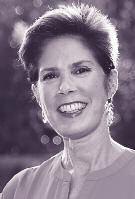
Hello from the CMEA Bay Section. It is crazy to think that we are almost half way through our school year. This means that winter concerts, jazz festivals, the CMEA Bay Section Winter Conference and CASMEC are near.
I do hope that you will all make an effort to attend the fantastic professional development that CASMEC has to offer in all disciplines of music education, in addition to enjoying the featured musical guests and student all-state ensembles. I am so proud of my CMEA Bay Section colleagues and school programs that have a prominent role in the CASMEC 2018:
Ed Harris, San José State University Professor Emeritus of
• Music, and California All-State High School Symphonic Band Director.
The CMEA Bay Section will hold its winter conference at Chabot College in Hayward, hosted by director of bands Tim Harris on January 12 and 13, 2018. Our junior high conference ensemble directors are Ulices Chavez, junior high band; Doris Fukawa, junior high orchestra; and Michael Najar, junior high choir. Our students are so fortunate to have such accomplished educators involved with our ensembles. We expect to have more than 300 educators (active, retired, collegiate) in attendance and will have nearly 300 students involved in the conference junior high ensembles.
Dr. Danielle Gaudry, California State University East Bay Direc-
• tor of Bands, All-State Junior High School Symphonic Band Director.
Our conference will offer approximately 40 sessions in the areas of band, choir, jazz, orchestra, classroom music, multicultural music, technology and higher education. We are also featuring the four-time winning school (in the high school big band division) of the Next Generation Jazz Festival Monterey, Northgate High School Jazz Band 1, under the direction of Greg Brown, in a showcase jazz concert.
John Burn, Homestead High School (Cupertino) Music Depart-
• ment Chair and Instrumental Director, CMEA State PresidentElect, and California All-State Junior High School Concert Band Director.
This conference is also an opportunity for us to acknowledge many of our outstanding music educators across all genres of music education based on nominations submitted by our membership.
Mike Galisatus, College of San Mateo Director of Band, Stan-
• ford University Jazz Orchestra Director, and California All-State Junior High School Jazz Band Director.
• tion of Bruce Lengacher.
Acalanes High School (Lafayette) Bella Voce under the direc-
• under the direction of Jonathan Grantham.
Amador Valley High School (Pleasanton) Wind Ensemble 1
• direction of Keith Johnson.
El Cerrito High School (El Cerrito) Wind Ensemble under the
• Dr. Scot Hanna-Weir.
Santa Clara University Chamber Singers under the direction of

The CMEA Bay Section will continue our Outreach Project, which involves inviting directors from Title I schools that have not previously attended our conference to attend free of charge; we are also fortunate to be in a position to have the funding to sponsor up to 30 students from Title I schools in the ensembles, thanks to the generosity of several East Bay and South Bay donors. We are so excited to be in our second year of implementing our Outreach Project.
I look forward to seeing you all at CASMEC, and happy concertizing until then.

by Ryan Duckworth
CMEA Southeastern Section President
Greetings, Southeastern Section members.

I wanted to take this opportunity to personally invite you to join us at CASMEC this year. I know that several of our local colleges and universities will be there and it is always a great time to reconnect with those institutions. I know that many of you will have students in the all-state honor ensembles. It is worth the trip just to see those amazing performances alone. Our collegiate members will gain so much from attending: the research poster sessions, meeting industry partners, and even meeting the CMEA state leadership. For everyone, there is a variety of sessions that can inform, inspire, and enhance your teaching. No matter your focus, there is likely a strand of sessions that will interest you.
For example, I will be presenting a session entitled “Organized Enough?” that will explore some strategies to help you prioritize your “To Do” list and hopefully help you move away from living at the mercy of those urgent tasks to allow more time for those things that you know to be truly important. Not that I have all the answers, nor am I an expert in the area, but as a fellow traveler on this journey, I hope to share some ideas and insights I have learned from people far wiser than myself.
Finally, CASMEC is a great chance to reconnect and recharge. Whether it is at a social hour to see friends and colleagues from up and down the state or simply bumping into a mentor in the hallways, it never ceases to amaze me how connected we are within the world of music. Sometimes we can lose sight of that as we isolate ourselves in our classrooms and focus on building the best local programs we can. If you have been to CASMEC recently, then you know exactly what I am talking about. If you have not been recently, or perhaps never at all, let this year be the one when you give it a chance. Invite your friends and colleagues to join you. I look forward to seeing you there.

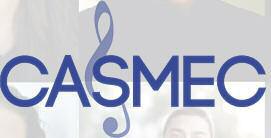

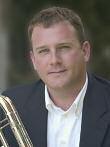








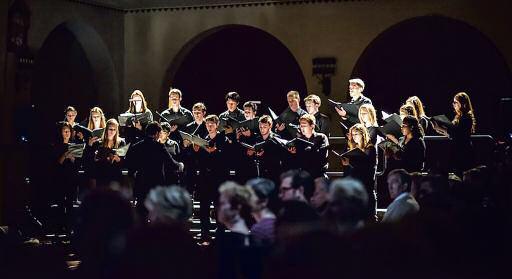




by AngelaE.Holmes, M.A.Ed.
CMEA Special Learners Representative
his year the clinics dedicated to special learners offer a full range of presentations that address issues that respond to areas music educators have requested. As the trend towards full inclusion increases, especially in California, conference participants will be able to revisit and review the thirteen special education categories with “Special Education: Reviewing the Basics” by Angela Holmes. Sessions by Julia Hahn, “The Music Within: 2.0,” and Darci Gibson, “Music in the Moderate/Severe Classroom,” will be offering practical strategies for immediate application in any music classroom or a dedicated special education classroom.
“Authentic Membership: Essential Aspects to the Inclusion of Students with Hearing Loss” by Dr. John Burdett will address accommodation and instruction for students who are hearing-impaired in the instrumental music classroom as self-advocacy and family advocacy for access to music instruction grows.
As inclusion grows, there is a need to understand how abled and other-abled students can successfully work together in a music setting. “Can Special Education Students Succeed in High School Instrumental Music? You Bet!” by Julia Duty is a program she developed that is gaining increased national attention. Closely aligned is the increased attention on the link between home and school for special learners. We will offer a look at another aspect of the family dynamic at this conference as we will hear from siblings of special learners. In addition to hearing how they can support their siblings. this clinic will share with you how performance affects siblings as a music student and a supporter of the other-abled sibling.
Please join us as we come together to increase our adaptive expertise and share insight about our collective experience into how music instruction can be inclusive and meaningful for all learners.



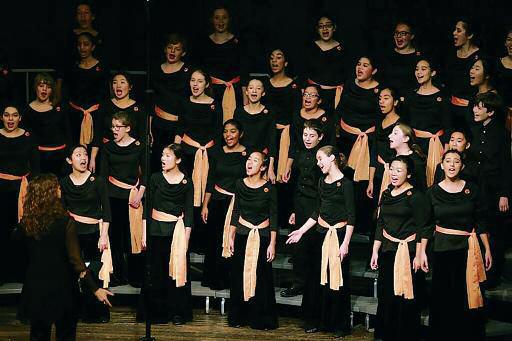



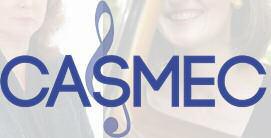







A Sampling of the Many Music Education Activities Taking Place on our State’s College and University Campuses
by Dr. LawrenceF.Stoffel

California Polytechnic State University, San Luis Obispo
The Cal Poly Collegians Alumni Big Band celebrated its 50-year reunion and the 80th anniversary of the band’s founding with a performance on Saturday, August 26, in the Madonna Inn Ballroom in San Luis Obispo. The band’s annual gathering draws more than 20 alumni musicians –Cal Poly graduates from the late 1940s to the early 1960s –to recreate the swinging sounds of Count Basie, Duke Ellington, Benny Goodman, Glenn Miller, Les Brown and other famous ensembles of the big band era. Members will travel to San Luis Obispo for the reunion and concert from throughout Arizona, California, Massachusetts, Oregon, and Qué bec, Canada.
The Collegians, the predecessor to today’s acclaimed Cal Poly University Jazz Bands, was founded in 1937 by then music department head Harold P. Davidson. As they celebrate the band’s 80th anniversary and their “golden” reunion this year, members are urging younger Cal Poly jazz band alumni to join and keep the annual tradition going into the future.
http://music.calpoly.edu/news/

University of Southern California

California State University, Dominguez Hills
Whole Music Retreats: In addition to his work here at CSUDH, Dr. Rik Noyce is a co-founder of a not-for-profit 501(c)3 organization: Whole Musician. Recognized by the National Flute Association (2014) for being a creative and forward-thinking organization, the Whole Musician team educates all facets of modern musicians with the goal of helping participants realize their individual potential for success. This highly qualified, specialized, and disciplinecertified team collaborates to offer unparalleled intensive retreats addressing the mental, physical, and musical demands placed on the 21st century performer.
Whole Musician has worked with musicians around the globe and welcomes performers on any instrument, vocal range, or experience level. Events of 2017 included a tour of Texas universities in March, a five-day retreat in Toronto in June, and a five-day in Minneapolis in August.
For more information, biographies, certifications, and retreat applications, please visit http://www.wholemusician.net/. http://www.csudh.edu/music/
Five USC Thornton students and alumni have become principal chairs with the Los Angeles-based American Youth Symphony for the 2017–18 season. Student Tiffany Chung will serve as principal second violin, alongside principal oboe Laura Arganbright, and principal clarinet Sergio Coelho (GRCT ‘16), while alumna Lieza Hansen (MM ‘16) will serve as principal bassoon and Amy Ksandr (MM ‘17) as principal percussion.
The American Youth Symphony provides landmark fellowships to musicians in high school through doctoral programs to prepare them for leadership in 21st Century orchestras and ensembles.
https://music.usc.edu/category/news

Concordia University Irvine today announced that it has secured global architectural acoustic consulting firm WSDG (Walters-Storyk Design Group) of New York to design the professional recording studio in its new Music, Worship and Theology Building. The MWT building, the first building in CUI’s Master Plan, will serve as the intersection of musical tradition and theological foundation, values core to the Lutheran faith.
“Music education has been a relevant pursuit for hundreds of years, and it’s only gaining steam as we better understand its value for culture,” said Assistant Dean Jeff Held, D.M.A. at the College of Arts and Sciences at Concordia University, Irvine. “These new, modernized facilities will be some of the best in Southern California, helping Concordia to remain a leader in music education.”
The 1,110-square-foot recording studio will be used as a recording, teaching, and rehearsal space. Given Concordia’s proximity to the Los Angeles music industry, the space will provide a venue for students, professors, and artists to collaborate in facilities that meet the music industry’s standards. Both choral and instrumental ensembles will use the professional recording studio, as will the music department’s newest major program: commercial music. The commercial music major prepares students for careers in musical performance, songwriting, composing for media (TV, film, and gaming) and music production. Concordia’s music program offers a bachelor of arts degree for music majors with concentrations in commercial music, composition, church music, instrumental performance, music education, piano performance, and vocal performance.
Scheduled for completion in December 2018, the Music, Worship and Theology Building’s main floor will house a 2,250-square-foot orchestra hall, a 1,900-square-foot choral rehearsal hall, a percussion room, and a piano instruction room. The lower floor will feature a 1,110-square-foot live recording room with three isolation (ISO) booths, a control room, classrooms, an open office suite, faculty offices, an event space, and conference and breakout rooms. The studio will be tied into the orchestral and choral rehearsal rooms, allowing multiple ensembles to record simultaneously. The top floor will accommodate practice rooms, and faculty studios for special practice and instructional tutorials. The MWT Building, estimated to cost $30 million, will be funded by private donations.
Submitted by Orith Farago

University of California, Los Angeles
Plá cido Domingo, the internationally renowned opera singer, conductor, National Presidential Medal of Freedom recipient and winner of twelve Grammy awards, received the UCLA Medal, the campus’ highest honor, on November 12 during a medal ceremony and masterclass at the UCLA Herb Alpert School of Music.
“Plá cido Domingo’s contributions to the world of opera as a singer, conductor, administrator and educator are unparalleled,” said UCLA Chancellor Gene Block, who presented the award. “He has been a powerful champion for the arts in Los Angeles for five decades, and his exceptional commitment to arts education embodies UCLA’s highest ideals.”
The UCLA Medal was established in 1979 and is the highest honor bestowed upon an individual by UCLA. It is awarded to those who have earned academic and professional acclaim, and whose work demonstrates the highest ideals of UCLA.
Past recipients include music luminaries Ella Fitzgerald, Henry Mancini, Herb Alpert and Quincy Jones, as well as writer Toni Morrison, President Bill Clinton, architect I.M. Pei, UCLA basketball coach John Wooden, Supreme Court Justice Harry Blackmun and UCLA alumna and astronaut Anna Lee Fisher.
http://newsroom.ucla.edu/releases

To help with healing, UC Irvine music students bring their instruments to Las Vegas shooting memorial: Last week this group of music students from UCI took their instruments and went out to Las Vegas to share music at the site of the 58 crosses that have been erected to honor each of the victims of the shooting. The group included Miles Vinson, Jessandra Kono, Luis Zambrano, Shulamite Yeh and Adam Sloma and teacher Sarah Koo. (The full article can be found on the Orange County Register’s website, http://www.ocregister.com/2017/10/20/.) http://music.arts.uci.edu/news

If you have an item for a future “Higher Education Happenings” column, please e-mail your item (in 200 words or fewer) to Lawrence Stoffel at stoffel@csun.edu. Submissions will be included on a first-come/space-available basis. This column contains items received by submission as well as from culling the Internet.



by Bill Ingram Music Educator, Clinician and Adjudicator since 1969
eeping in touch with your feeder schools is of vital importance to the success of your high school music program. The success and future of all clubs and organizations is continuous recruitment of new members. High school band, orchestra, and choir programs are no different and must be supplied by the director’s ability and “live” contact with his or her feeder ensembles.
Just assuming that your groups will take care of themselves by going by the list of new students on your roll sheet at the beginning of each year will definitely not be enough to maintain the numbers for your performing classes. You need to make constant contact with your feeder programs, not only with the teachers, but also with the music students themselves. By making contact I’m not referring to e-mails and/or regular mail, but physical appearance in their music buildings on their campus. Standing in front of them and looking them in the eye while you tell them how important they are to your program –these are great recruiting tools that work.
I hear from music teachers all the time that they don’t have the time to do this. Such excuses as “I have festivals, concerts, trips, school plays, faculty meetings, etc.” Yes, this is true, but you make time, calendar it, and more than once, but especially during the second semester when eighth graders are being counseled for their new high school classes. If you have rural and/or country schools that feed into you, the physical contact with new students is very, very important. They are not used to, or have any experience with, the “big” high school that they are moving up to. Many (from my experience with K–8 schools) are not real sure, or in some cases, a little scared of the big change that is about to happen. You need to convince them that the music program is the biggest and most mobile group on campus, and they are needed to keep that going. And if they are band members, that they are performing on a musical instrument that is not that
easy to play, but they have accomplished the feat of learning to master an instrument that is designed for adults.
“Don’t let a few years of this mastery come to a stop. You’ve completed the internship (or boot camp if you will) of a very technical and exciting band, orchestra, or vocal musical program, so let the fun continue with your needed enrollment in the high school program.”
A few high schools in our area have their incoming eighth graders come to at least one of their fall home football games and sit with the band playing the fight song and many quick “pep” tunes. Having the entire middle school band come with their director along with their band parents works really well. It’s a fun and exciting venture and it works because the incoming kids start feeling comfortable with the high school music program. But don’t let it stop there. Invite them to your spring concerts, or have a day that you take some of your students over to their schools and play or sing a few tunes –especially using students who came from that very same middle school. To have these young band students seeing and hearing musicians who came from their very own school is a terrific excitement for them. Anytime the younger kids see this, it makes the decision to continue their music classes into high school much easier.
Most counties and/or sections have a music educators club or organization that meets six or seven times a year. This is an important group to belong to, not only to keep up with dates and times of musical festivals and honor group concerts, but to meet other music teachers in your area, and even in your own community, that you don’t normally have the time to see during the regular school day. The music association is there for you and its members to preserve and to support all types of music education: classroom, vocal, band and orchestra. We all have the same drive, to educate our students on to becoming better musi-
cians, and by giving them whatever it takes to excel to that level. So, let me post a few important items from this article:
Find a way early in the year to meet
• and greet your feeder school music programs - both teacher and students.
Invite their band, orchestra, or choir to
• any of your first semester concerts or events and repeat a visitation after the first part of the year and make a push to the eighth graders that they are the future to your high school program and how important they are.
Take a handful of your band students
• to the middle school classroom and have them talk about the high school ensemble that they are in (works really well with students who are from that same school) and have them play or sing a short up-beat piece together to excite the young students.
Professional-level experiences, diverse opportunities for collaboration and dedicated instruction from renowned performers, composers and scholars await you at the University of Colorado Boulder College of Music.
Work with leaders in the field to develop your talents and refine your passions as you experience The College of Music Advantage.
In-person auditions are held February 3rd, 10th, and 17th Recorded auditions must be submitted by February 15th.
Show a list of items to them that would
• be the requirements that you are looking for when they come to you (scales, certain registers to sing or play, articulations, etc.).
Try to set up a day that you can be at
• the school to “audition” incoming students. Many directors do this in our area and it works well. Even a second audition can be scheduled prior to the start of school for students who need a little more time to work on the requirements.
The more that you see them, the more
• comfortable they become. It takes the nervousness and the undecided feeling out of the picture.
Having a day to go to the feeder
• school with a few of your parents and measure the incoming music students for uniforms, robes, suits, etc. This always excites the students. (You measure all students, even though you or the other teacher aren’t sure what students are qualified or made the decision to continue.)
Always correspond with your eighth
• grade music teachers by e-mail and or texting; but don’t let this be the only way of correspondence… it must be live. It’s such a pleasure to walk on a feeder school campus and have a student or some students call you by your name. If you hear this, then you are doing your best recruitment ever.

by Dr. Lily Chen-Hafteck CMEA World Music Representative

CASMEC2018 is just around the corner. We have already prepared a number of exciting world music sessions at this conference for you. We will bring to you an authentic experience of the music and cultures of China, Cuba, Korea and Puerto Rico. Moreover, there will be a session to learn about protest music, an American musical genre that can be appealing to students from the diverse population in urban schools. A multicultural music education research presentation will also be featured this time. Below is a preview of these world music sessions at the conference and a brief introduction to their presenters.
Jing Song is lecturer of music education at Capital Normal University, Beijing, China, who has come to the USA as a visiting scholar at UCLA this year. She will introduce some Chinese music and musical instruments at her session. There will be a live demonstration of how several Chinese instruments are played and performed. Discussion of the origins of these instruments can enhance an understanding of Chinese musical art. Through an integrated experience of Chinese music and poems with creative activities, participants will actively learn about traditional Chinese music and culture.
Ji Hae Lim, who is currently head of CAL School of Music, executive director of Young Muse International Competition, and DMA candidate in music teaching and learning at USC, will present a session on Korean music. This workshop will introduce participants to strategies of how to apply multicultural aspects to their curriculum through examples of teaching Korean folk tunes. In the workshop, she will first briefly review literature on multiculturalism in music education in the United States. Then, she will introduce Korean traditional cultures, folk tunes, traditional instruments, and dance. Participants will have a fun time learning Korean music and dance during this workshop. Lastly, she will share tips of applying multicultural aspects to music curriculum. The goal is to provide music teachers who want to use multicultural music in their music classes with a starting point to begin with and become comfortable in doing so.



Christopher Mena is a former high school band director in San Diego, California, and currently a Ph.D. candidate at the University of Washington, Seattle. In this clinic, he will demonstrate how to incorporate the world music pedagogy process into secondary instrumental rehearsals. Using key concepts from Teaching Music Globally (Campbell, 2004), he will discuss the five stages of the world music pedagogy process (attentive listening, engaged listening, enactive listening, creating world music, integrating world music) and provide attendees with practical tools that they can implement in their classrooms immediately. To illustrate these concepts, he will utilize a rehearsal of Shelly Hanson’s Islas y Montañas, Mvt III: Seis Manuel and supplementary activities to introduce attendees to the music of Puerto Rico.
In this session, I, professor of music education at UCLA, will collaborate with Keith Cerrato who is a UCLA music education student, in bringing some Cuban musical and cultural experience to the participants. Cuba has a rich musical culture and people often engage in various musical activities. Through singing the traditional songs from Cuba, playing the Afro-Cuban rhythm on claves, and dancing to the festive music of the carnival, participants will experience the musicality of the Cuban people. This is a motivating learning experience that can expand the horizon of students’ understanding of what music can be. It can also deepen students’ cultural understanding of Cuba.
American Self-Portrait, American Selfie
Michael Albertson is the music department chair at the Geffen Academy at UCLA. He became interested in protest music while teaching in a large diverse high school in New York City. He witnessed students who struggled with the traditional music curriculum thrive when given the chance to discuss topics and experiences that were immediately relevant to their lives. In his session, participants will listen to and respond to American protest music from the past 75 years. He will suggest that protest music connects people with different cultural heritages and thus creates a uniquely American art form. It can be used to enact social change in the United States toward more democratic ends. Attendees of the session will collaborate to find ways that their diverse personal and music experiences and insights can create democratic spaces for students in our music classrooms.
Children in Brazil, Canada, China and Kenya
As a researcher who is interested in multicultural music education, I will be sharing a research report on my Advancing Interdisciplinary Research in Singing (AIRS) project that was supported by the Social Sciences and Humanities Research Council of Canada. The goal was to investigate whether singing songs from foreign cultures leads to an increase in cultural understanding and appreciation of people from those cultures. The project involved 439 children, ages 10–11, from four countries (Brazil, Canada, China and Kenya) who learned to sing traditional songs from these four cultures during 12 weeks. One class (the experimental group) received instruction on both the cultural information and songs while the other class (the control group) received instruction on only the cultural information and no singing. Children answered questionnaires before and after the study to assess attitudes toward the people from the four countries as well as song preferences. Interviews were conducted with teachers and children at the end of the study. Findings demonstrated the intricate relationship between singing multicultural songs and cultural understanding.
Now, the above preview of the world music sessions that will be offered in 2018 CASMEC must have given you a good idea of the very special program that is waiting for you. Please come and join us in February in San José. Looking forward to seeing you there.

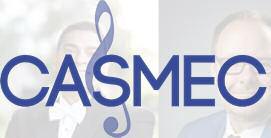




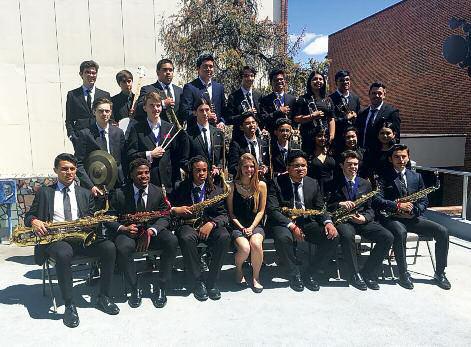









by Joseph Cargill
CMEA CASMEC Logistics Coordinator
s our first semesters in the classroom begin wind down, I hope many of you are beginning to become as excited as I am about CASMEC 2018, which will be hosted at the McEnery Convention Center and Fairmont Hotel in downtown San José.
I would like to take this chance to express my thanks to my predecessor CMEA CASMEC Logistics Coordinator Bill Wilkinson. Bill worked tirelessly for music education in California and helped to bring opportunities for professional development and growth to educators as part of CMEA and the California All-State Music Education Conference. We all wish him the best in his new role as president of the CMEA Central Section, which, as a member, I can say he is doing a phenomenal job. Thank you, Bill.
Turning now to what we have to look forward to in San José in 2018. The CMEA sessions will once again be located in the east side of the McEnery Convention Center, adjacent to the Marriott Hotel. The professional development, collegiate, special learners and technology sessions will be in the lower level rooms, 111–114, and our general music and world music sessions will be in the second level rooms, 212 AC, 212 BD and 213. The offerings for our sessions this year are very exciting and will bring you a wealth of tools you can take back to your classrooms and implement the minute you return to your students.
Make sure you are able to see Richard Lawton’s session “String Band: Teaching Kids to Sing and Play.” This session will be a live demo lesson where you will be able to see experienced educators interacting with students and giving real-time instruction. We are also excited to have Julie Duty from United Sound, an organization dedicated
to bringing music education and performance opportunities to students with special needs, joining us to present her session “Can Special Education Students Succeed in High School Instrumental Music? You Bet!”
For those teaching at the secondary level, be sure you’re able to join Dr. Jermie Arnold (CSU Long Beach) and John Miller (American Fork High School) for their presentation “Stronger Together: They’re Not Mine, They’re Not Yours, They’re Ours.” Dr. John Burdett will be hosting a panel discussion “I’m Not a Booster Mom, I’m the Band Director: A Panel Discussion on the Experience of the Female Music Educator,” where the topic will be the career of female band directors in the modern music classroom.
Along with these and many more sessions, we are very pleased to have Dr. Tim Lautzenheiser with us this year. Be sure to attend his session on Friday morning on the first floor of the convention center. For our collegiate members and attendees at the conference, make sure to attend “Pizza with the Presidents” on Saturday at 12 p.m. in the fellowship hall of the Cathedral Basilica of St. Joseph on the corner of San Fernando and Market Streets. This is an opportunity for you to sit down and have lunch with the presidents of CMEA, CBDA, CAJ, CODA and CCDA. Don’t miss this chance to hear from the people at the forefront of music education in California. I hope to see you in San José for what is going to be a phenomenal professional and educational growth experience for all. Be sure to check out the CASMEC website, and download our new CASMEC app for detailed times and locations for all sessions being presented in 2018.









































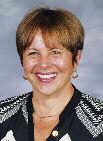











Please join us at the 2018 CMEA Awards Gala!



This event is held as part of the California All-State Music Education Conference – CASMEC, on Friday evening, February 16, 2018 with cocktails at 5:00 p.m. and the Gala beginning at 5:30 p.m.
The gala will be held at Il Fornaio which means “The Baker” in Italian.
This award-winning restaurant offers an authentic and unique dining experience. Il Fornaio is located at 302 South Market Street. San Jose, California 95113 (a short walk from the conference hotels and convention center).
Come enjoy a wonderful evening to honor our state award winners. The Awards Gala sold out last year, so order your tickets early! Tickets can be ordered online through our conference registration page at http://casmec.org/register-for-casmec/ You do not need to be registered through CMEA or for the conference to attend the Awards Gala. For more information please contact Trish Adams, cmea@calmusiced.com.

by Michael D. Stone
CMEA Immediate Past President and Western Division Representative, National Council of Music Program Leaders
As your CMEA immediate past president, it is my pleasure to announce the slate of candidates for the upcoming CMEA state election. Please take a moment to read the biographical information and candidate responses from our candidates for president-elect, vice president, and secretary.





Voting will open Thursday, February 1, 2018, and end at 12:00 noon on Saturday, February 17, 2018, at the California AllState Music Education Conference (CASMEC). You will receive an Election Buddy e-mail with your ballot, and may use a computer at the CMEA booth at CASMEC if you prefer. Please contact me at meuph@att.net by Monday, February 5, 2018, should you want to request a paper ballot mailed to you.
You will also be considering a minor update to the CMEA Constitution and Bylaws, also included in this article.
I want to thank our state office candidates for their willingness to serve. Our association will be in good hands with any of these outstanding individuals leading our work.

Armalyn
De La O
Candidate for President
Armalyn De La O believes that music education is the right of every child and should not be limited by economics, social status, geography, or endangered by educational trends. As CMEA president, Ms. De La O will build on CMEA’s successful programs and collaborations to continue the critical leadership California needs to achieve this fundamental right of every child.
Ms. De La O is the regional director of the RIMS California Arts Project located at CSU San Bernardino, a regional site of the California Arts Project, one of nine California Subject Matter Projects. She concurrently serves as the coordinator for visual and performing arts for the San Bernardino County Superintendent of Schools office (SBCSS). In her dual positions with RIMS CAP and SBCSS she leads arts education networks, professional learning, and is a regional arts lead for the CCSESA/California Department of Education. These roles provide Ms. De La O with insight into the larger educational landscape and a voice for music education.
Ms. De La O’s service to music education and leadership spans local, regional, statewide and national contexts. She currently serves as pastpresident for the CMEA Southeastern Section Board. She was one of ten national writers for the new National Core Arts Standards in Music. Ms. De La O has represented music educators on the committee to develop the Music Standards for the National Board for Professional Teaching Standards, the committee to develop the California Visual and Performing Arts Content Standards for Public Schools in Music, and the committee to develop the program strands for the California Subject Examination for Teachers (CSET) Program in Music.
Ms. De La O holds a bachelor’s degree in music education and a master’s in education administration. She has taught music at the elementary, middle and community college levels and as a lecturer in the music department at CSU San Bernardino. Ms. De La O would be honored to continue her service to music education as CMEA’s president.
What are the major challenges that will face music education in California over the next five years? How would you address those challenges? What should CMEA do to serve the music education profession in California over the next five years?
California’s fiscal outlook will present the major challenges for music education over the next five years. As of July 2017, California ranked #43, below average, in the George Mason University’s Mercatus Center “Ranking the States by Fiscal Condition” report.The report is based on each state’s comprehensive annual financial report using indicators such as debt obligations, unfunded liabilities, and cash positions. Districts are already making budget decisions based on expected educational budget cuts in the coming years. While California has demonstrated the ability to overcome fiscal downturns somewhat better
than many other states, the local district decision making process requires an active music education base.
The state’s fiscal challenges have the potential to make current and future music education programs vulnerable.This exposure will need to be addressed through proactive approaches by CMEA. Supporting the current positive trend of expanding, reinstating or establishment of new music programs will be critical. To address this challenge as CMEA president, I will set as a priority the expanding and continuing of CMEA’s advocacy efforts and leadership education so that music educators are ready and able to play active roles as fiscal decisions are being made at the local level. CMEA will need to expand the work with the sections to strengthen advocacy efforts at the local level where these financial decisions are made. CMEA can support the sections by providing continued training in how to build local CMEA coalitions with parent groups and local business partners who can serve on stakeholder committees and speak to the importance of music education in their community and at their schools.
A related challenge is maintaining the gains made over the last five years in face of budget cuts. Music education should not receive unfair or disproportionate levels of cuts compared to other content areas. I am prepared to work with CMEA’s leadership as we organize our advocacy and leadership resources to support our members in facing the impending fiscal challenges. CMEA will need to continue to work closely with our partners, including the other three professional arts education organizations, parent organizations and music businesses. CMEA’s continued work with NAMM at the state level will build an even stronger, yearlong presence of music education in Sacramento.
Over the next five years, critical California instructional policy and documents will be revised and adopted. CMEA will continue to take the lead in advocacy for music education and work with our arts education association partners at the state level to ensure that visual and performing arts education will continue to be included in all California students’ well-rounded education. CMEA will serve as a key resource for California’s standards revision process during 2018. CMEA will serve the field through providing critical input and leadership in 2019 on the new Visual and Performing Arts Framework, leading to the adoption of music instructional materials in 2020. CMEA has an important role in expanding and supporting the continuation of current collaborative efforts for arts education with the 4 Arts Education Organization Coalition, Stand Up 4 Music Coalition, and NAfME as both state and federal educational policy undergoes shifts, and new policies are being developed and implemented. CMEA must additionally continue to support the retention of current music educators, recruitment and mentoring of new music educators. CMEA is well positioned to meet these and other challenges head-on.






SSantiago Sabado
Candidate for CMEA President
antiago Sabado is from Placerville, CA. He holds his master’s of music in instrumental wind conducting, and his bachelor of music in music education and trumpet performance from Sacramento State University as well as his teaching credential in music. While attending Sac State he studied trumpet with Gary Dilworth and conducting with Dr. Clay Redfield and Dr. Robert Halseth. He also participated in conducting workshops with Dr. Mallory Thompson and Dr. Jack Stamp.
In his career Santiago has taught all grade levels from kindergarten through college. He is currently the director of instrumental music at Ponderosa High School in Shingle Springs, CA where he serves as the visual and performing arts department chair, and instructs the marching band, concert band, jazz ensemble, and beginning instruments courses. There he also hosts the Gold Country Jazz Festival, a non-competitive festival meant to encourage the growth of jazz programs in the community and in the region. He also taught the Sacramento Mandarins Drum and Bugle Corps from 2010 to 2015 where he operated as the brass caption head. He now directs the Mandarins Leadership Camp which functions to develop student leadership in band programs throughout Sacramento and the surrounding regions. During the summer, Santiago teaches at the Sugarloaf Fine Arts Camp in Pollock Pines, CA.There he directs concert band during session one and directs the middle school jazz ensemble during session two. Santiago has been the guest conductor for the Western Slopes 6th Grade Honor Band in El Dorado County and the Bi-County Middle School Honor Band in Calaveras and Amador Counties.
He has served as the vice president, president, and currently holds the position of immediate past president for the CMEA Capitol Section. Santiago has been an active adjudicator for the Northern California Band Association since 2008 and is a member of other professional organizations such as CBDA, NAfME, and NCBCDA. Santiago is passionate about music and even more passionate about students. He believes that music is transformative and all students should have access to a high quality music education at every stage of a student’s academic career and life. His philosophy is that music should be inclusive, and not exclusive, and feels the music profession is on a great trajectory to positively influence more students than ever through new innovations developed by the great music educators here in California.
What are the major challenges that will face music education in California over the next five years? How would you address those challenges? What should CMEA do to serve the music education profession in California over the next five years?
I believe there are two major challenges that we are faced with currently in music education and will continue to challenge us over the next five years. Number one is the music teacher shortage across the state. CMEA along with NAfME have done a phenomenal job showing the
importance of music education as part of a well rounded education. School districts up and down the state have brought back positions that were cut during the recession and added new positions particularly in the area of elementary music. Unfortunately, leading up to this boom in open positions, the prospect of not only becoming a teacher, but a music teacher, wasn’t positive. Now we have an abundance of positions with no one to fill them. We are faced with music positions going unfilled, positions being cut because of no applicants, or positions being filled by interns. This predicament does not help us as a profession. There is a need to increase the pool of potential music educators in the state. I believe that this can be achieved through working with music education teacher prep programs at the universities across the state to recruit the next wave of music education professionals. This would include aiding CMEA section boards with their efforts to increase the level of involvement with the collegiates and university faculty, as well as working toward developing a campaign to demonstrate the importance and viability of pursuing a career in music education.
The second challenge I see music education facing is relevancy and access. As a profession we tend to lean very heavily on the large ensembles such as band, orchestra, and choir as our focus. I believe that these are important components of music education, but these ensembles tend to be somewhat exclusionary the farther a student goes along in school and only accesses a small portion of a school’s population. I believe we can take our lead from elementary music educators where they are teaching students how to experience, create, and appreciate music. Once a student gets to high school, unless that student did band, choir, or orchestra previously, they may not have the opportunity to participate or engage in music in a classroom setting.This is a disservice to the student and the school. CMEA and NAfME have begun great campaigns to explore innovations in music education such as multicultural music education, technology, and composition.The pursuing of these campaigns is the future. If we can build a strong network of teachers that are moving in this direction, tap into them for curriculum development and work with teacher prep programs to incorporate these innovations into their programs we will be going a long way toward moving our profession forward and expanding the reach of music education beyond its current state.
CMEA should continue to lead the charge in the areas of advocacy, collaboration, and the strengthening of the profession. CMEA’s current trajectory is a positive one through their work at the State Capitol, Stand Up 4 Music campaign, and innovations work. Over the next five years we need to further develop and enrich these campaigns to keep them moving forward and remain relevant. I believe that CMEA is positioned to continue to have a positive impact on the music education profession in California. If we are able to address the challenges of teacher shortages, access, and relevancy, while continuing our current campaigns, we will be looking at not only a stronger CMEA, but a stronger California.



Anne Fennell
Candidate for CMEA Vice President
Anne Fennell is the creative arts chair, instrumental and music Composition teacher at Mission Vista High School in Vista, CA. She holds a bachelor’s degree in music education, a master’s in leadership studies, Orff-Schulwerk certification levels I, II, and III and has 90plus graduate hours and certifications in music education, world music studies, character education, gifted and talented education, and crosscultural language and academic development. Her experiences include 30 years of teaching K–12 music education, including: K–8 integrated arts and music, leading performance ensembles in civic, professional, and national conferences, the NAMM show, annual NAMM board of directors meeting (2013 and 2016), and National AOSA. Anne currently teaches three levels of both steel drum ensembles and music composition through technology, grades 9–12. Her ensembles have been featured in InTune Monthly and NAfME’s Teaching Music magazines.
She is a recognized presenter and clinician at professional conferences and workshops at regional, national, and international levels, including ISME, AOSA, the National PTA, Tennessee Arts Academy, NAfME, and numerous music education conferences throughout the United States. She supported beginning teachers through the California BTSA program and was also an invited speaker for the U.S. Department of Education’s Research to Best Practice Conference in Washington, D.C. In 2015, Anne was a keynote speaker at the first China Conference for Music Education in Shanghai-Addressing the Whole Musician, followed by workshops in music composition. In 2016 she was chosen as a top ten finalist for the GRAMMY Music Educator Award and received the CMEA IN-Ovations Award (2017). Other awards include: California Music Educators Association’s SBS Innovation in Music Education (2016), Illuminating Culture Award (2013), Outstanding Music Educator Award, Southern Border Section (2008), and Teacher of the Year in Vista Unified School District. In March of 2017 Anne was chosen as the Region 8 Magnet School Teacher of the Year and in April of 2017, the Magnet Schools of America National Teacher of the Year.
Ms. Fennell has made advocacy presentations and served as a consultant for school districts on assessment, standards-based curriculum, creativity, composition, and integrated arts programs. Her publications include four (grade 9–12) complete courses approved as ‘F’-Visual and Performing Arts (A-G requirements) titles from Pearson Education and Silver Burdett (grades K–8), MusicVentures (grades K–2, created with a U.S. Dept. of Education research grant in conjunction with NAMM), Disney (Baby and Little Einsteins CDs), Labels for Education: Discovery Through Music with the GRAMMY Foundation, and K–12 integration connections for the Roots of Rhythm curriculum. She was a Sub-Committee Music Writing Team member for the National Core Arts Music Standards and is 2016–2018 member of the NAfME General Music Education Council and the 2016–2020 chair for the NAfME IN-ovations Council.
What are the major challenges that will face music education in California over the next five years? How would you address those challenges? What

should CMEA do to serve the music education profession in California over the next five years?
While music education will face challenges over the next five years, I believe we can learn and grow from these to create stronger and unique programs for all students, K–12. Education is changing quickly with the demand for personalized learning and competitive models. I will strive to create connections and support professional development for teachers to sustain and grow their current programs, while also adding innovative approaches in music education and addressing these changes. This in turn, will encourage students to stay and be a part of their school music communities.
To increase music participation in education, we should also know our current K–12 music enrollment and the districts’ music needs to provide workshops and clinics that will best educate for our growth. From this we can create models of districtwide action plans that can guide and expand programs. Once known, we can then provide state and regional conferences that will align to the needs of the programs for directed professional growth.
Funding for programs will always be a need in music education and I will continue to be on the forefront of this need to ensure appropriate funding for music as a core subject. Fully funding programs will allow us to maintain our existing programs while providing the education and financial means to develop new programs. As a core subject, we should teach all students and provide inclusive, diverse, and equally accessible programs for everyone.This requires a budget that will support the constant changes and needs of our students and schools. Knowing and teaching to our clientele, and having the ability to create districtwide surveys and understand their needs will help increase our programs. CMEA is in a position to help educators identify student interests and guide programs to grow, while also connecting teachers to develop a web of programs and a statewide musical community.
Music is a core academic subject and should be taught to all students, in all schools, and in all grade levels: Pre–K through twelfth grade. I will continue to drive this message and to support proper professional development and funding legislation so that music for all students can exist. CMEA can identify and support programs in need, while providing models of educational excellence with all-inclusive programs.These programs can be our guides for growth.
As a leader in CMEA I will strive to work with universities to support and encourage future students in music education. With support, these students can become prepared to teach in both traditional and innovative models that will eventually connect every student to music education. We can also create a growth model of educational excellence with an expansion of our current mentoring program to guide new teachers, while working collectively to connect programs, ideas, and educators. Together we can strive to provide a quality and rigorous music education that will support lifelong music making and will contribute to the multi-billion dollar creative arts industries that provides both great economic and cultural value to the state of California.



Christina Latham Candidate for CMEA Vice President
In the twenty-four years she has been teaching music, Christina Latham has had the opportunity to teach at all the levels: elementary, middle, high school and college.
While attending San Francisco State and earning her bachelor’s degree in music education she was the president of the collegiate chapter of MENC. She is currently a member of CMEA, the California Music Educators Association, NCBA, the Northern California Band Association and CBDA, the California Band Directors Association.
For the CMEA Bay Section, she was the band manager for the junior high school honor band and served as an area representative. Christina has also served as the vice president of clinics and awards for NCBA, and as the secretary. She is currently serving on the board of directors for the Santa Cruz Jazz Festival and she is the section president for the Central Coast Section of CMEA. For CCS CMEA she has facilitated the high school honor band and the large ensemble and jazz festival. In addition she is a regular adjudicator for NCBA.
She started teaching in San Francisco as the elementary traveling music specialist. Her next position was at Parkway Heights Middle School. Next she taught elementary music for Stockton Unified at three elementary schools.
After that her next position has been at Santa Cruz High School since 1999. In her time there she has rejuvenated an award-winning program that is the pride of the town. Currently teaching at both Mission Hill Middle School and Santa Cruz High School she has created a thriving band program. Creating students with a passion for playing music and a thirst for more music and learning opportunities is a strength. During her tenure, the groups have blossomed in their performance ability. The concert and jazz bands perform a varied and rich selection of music, often placing first in their division at competitions and receiving superior ratings at the NCBA concert and jazz festival and unanimous superior ratings at the CCS CMEA Large Ensemble Festival. Last spring, the jazz band received its first command performance at the Santa Cruz Jazz Festival. The parade band has received numerous awards and honors, most recently earning showmanship sweepstakes. Her bands perform at local events such as parades, grand openings and other community gatherings. They also provide entertainment and spirit at many school events.
Recently Christina attended the American Band College and earned her master’s of music with an emphasis in instrumental conducting in 2013. This was a very rich experience where she grew as an educator and performer. She also met world-renowned composers, conductors, and performers, and made many new connections with colleagues from around the world.
Christina was recognized locally as the outstanding high school teacher of the year in 2014, the Santa Cruz Jazz Society Outstanding Educator in 2009, the CCS CMEA Outstanding Music Educator of the Year in 2013, and in 2011 as the NCBA Band Director of the Year.
What are the major challenges that will face music education in California over the next five years? How would you address those challenges? What should CMEA do to serve the music education profession in California over the next five years?
There are two major challenges. One is the teacher shortage and the second is teaching ideas and content that are modern. The first can be addressed by encouraging students to pursue music education in college and as a career. If we are passionate and motivated in what we do we will inspire our students to do the same. Then while they are in college give them opportunities to practice teaching. I believe it is important to experience the classroom before you are 100 percent in charge and on your own. Then once you are in the classroom it is important to be supported by colleagues that teach what you teach. As a music teacher you are often the only one in your building and you need to reach out or have someone reach out to you. I have had the pleasure of teaching a music technology class. I used the class to teach basics in music theory, composition and history. We used GarageBand to create music. Through this process I had the pleasure of meeting and teaching students who would never have thought of joining the band classes. Classes like this are really important to reaching students and giving them an entry point to music education. More courses like these are needed to reach a broader range of students. I would encourage teachers to develop courses like these to broaden their outreach within the school community.
CMEA has made significant changes and progress over the last several years. The two areas I feel are most important to continue to develop are in the areas of advocacy and education. Giving educators the tools and information to advocate for their programs and teaching teachers how to be better at their craft are key to the success of music education.
The Stand Up 4 Music Coalition is a powerful group. It brings educators, politicians and business leaders to the table to advocate for music in the schools. Increasing awareness of this powerful coalition will allow more educators to take advantage of their vital information.
CASMEC is something I have attended since college. It is the chance to learn new ideas in a variety of sessions, meet up with teacher friends you only see once a year and meet industry representatives who care about serving your program. Growing this event to include every content area and further develop new teaching areas is critical to its continued growth.



Lisa Crawford Candidate for CMEA Secretary
Dr. Lisa A. Crawford is currently a supervisor and lecturer at Cal Poly Pomona in the music education department. She is also a music teacher most focused on foundational music teaching and learning, general music and choral practice for K–12 and university levels. A presenter at state, national, and international conferences including CMEA, NAfME, and ISME, Dr. Crawford writes for CMEA Magazine and is affiliated with the Canadian research team, Advancing Interdisciplinary Research in Singing (AIRS).
Co-author of an article about singing and cultural understanding in IJME, her research interests also include composing with K–12 students, leadership, K–5 singing experiences, autism and composing, musical groupwork and K–8 students, composing and songwriting with technology, and memory and cognition of elders and how these relate to early musical and life-experience learning.
Dr. Crawford’s ideas about creating music and composition have evolved through her understanding as a child composer and songwriter and became an active composer as a young adult. During the summer of 2017, Dr. Crawford presented her first Music Tech Café- Young Composers Ensemble for music teachers and middle school students at Azusa Pacific University. Her overarching question: “...how does one approach educating our very young music students about composing?” is answered perhaps by simply raising the awareness of educators about compositional work itself.
Through activities that invite critical thinking for music educators and their knowledge of the topic coupled with experiential learning, Crawford invites teachers to practice composing as they work with K–12 students in the same way they would their main instrument. Her methodology provides opportunities to compose with all K–12 and university students, and uses all musical genres including jazz, hip hop, rap and popular music.
Dr. Crawford is also interested in the operations, economics, and politics shaping K–12 music education in the twenty-first century, within integrated arts education, and higher education. She continues to study the conflicts she observes, increases her competence in speaking about them, but also lends herself to building solutions.


Dr. Crawford holds a doctorate in music education from University of Southern California, M.M., music education, and M.Ed., curriculum and instruction from University of the Pacific, and a bachelor of music, composition from University of Oregon.
What are the major challenges that will face music education in California over the next five years? How would you address those challenges? What should CMEA do to serve the music education profession in California over the next five years?
It is with great passion and enthusiasm that I respectfully submit my application to serve California Music Educators Association for the 2018–2020 term as secretary.
My interest in serving on the CMEA Executive Board is a continuation of my leadership of the introduction of CMEA Southwestern Section (2013–2016) of which I am now the immediate-past president. In addition, and now in my second year, I serve as the Creating and Composition Representative on the CMEA State Council.
As an organization that consistently increases its ability to represent California’s music educators, CMEA and its partners hold great importance as we face economic, political, and policy changes over the next five years. Our goal as members of California Music Educators Association is to ensure that all students in K–12 schools have access to sustained, sequential, standards-based music education. Developing greater understanding of our communities with focus on issues of ESSA, unions, school choice, and new core arts standards will be needed and change-agent dialogue is required from within our membership. Creating a more direct focus on the meaning of “professional” by our organization of music educators will require greater attention to the matters of musical relevance for K–12 students.
My service with nonprofits began as far back as fourth grade when I served as secretary on the board of our local 4-H Club. I later became president and enjoyed the work of development and support for our new organization, separated from the original group due to the increasing size of my hometown of Modesto.These experiences “stick” and the organizations I have worked with in technology and music industries, K–12 public schools, and universities have well-transferred to the problems and challenges I find in our California music education network.


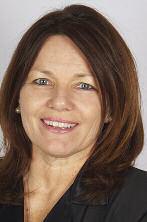
Sandra Lewis Candidate for CMEA Secretary
Sandra Lewis resides in San José, California, with her husband Jason and their two sons. Mrs. Lewis began her musical training at the University of Hawaii where she studied both clarinet and violin and received a bachelor of music degree. She completed a master’s degree in violin performance at San Francisco State University. Currently she works at Henry M. Gunn High School as the orchestra director and assistant band director.
Passionate about chamber music, she was the recipient of the Morrison Chamber Music Fellowship. Participants in in this program were provided opportunities to train with the Alexander String Quartet, known for mentoring aspiring musicians for careers in music. After receiving her master’s degree, she served as one of three directors at the Apple Hill Center for Chamber Music in Nelson, New Hampshire, from 1989–2000. In 1999 she went with Apple Hill Chamber Players to Amman, Jordan, where they shared their “Playing for Peace” project. She continues to encourage young musicians to play chamber music and provides numerous opportunities for each member of the Gunn Orchestra to participate in chamber ensembles throughout the school year.
Mrs. Lewis started her tenure with Henry M. Gunn High School in August of 2002. Since that time the orchestra has doubled in size. Her groups consistently receive superior ratings at CMEA festivals and contests. She has performed with her orchestra at the CMEA Bay Section Conference and twice for the CMEA State Conference. Under her leadership, the Gunn Orchestra has collaborated with area high schools to sponsor joint concerts between schools, worked with world-class conductors and composers, and performed in Stanford Lively Arts student matinee performances on the Stanford Campus. In 2013 her orchestra was selected to go to the Midwest Clinic and this coming March the Gunn Chamber Orchestra will be competing in the ASTA orchestra festival in Atlanta, Georgia.
She has been both an area representative and secretary for CMEA Bay Section. She has also served on CMEA Bay Section’s board as orchestra rep. As orchestra rep. she helped choose the Bay Section’s string clinics for their yearly conference and also worked on the new adjudication rubric. She has held the position of vice president and librarian for the Santa Clara County Band Directors Association and every year participates in auditions and sectionals with the band.
Sandra Lewis is the current CMEA state secretary and is honored to run again for the 2018 secretary position. In our current climate, she


feels that music education and the work that CMEA state leadership provides is vital to the health and well-being of the music educators all over California. Working with the other members of the CMEA board has helped her gain new insight into the structure of music education and she looks forward to serving in this position.
What are the major challenges that will face music education in California over the next five years? How would you address those challenges? What should CMEA do to serve the music education profession in California over the next five years?
I think one of the ongoing issues that we continue to face in California is access to a school music education program for all students K–12. The challenges are many and though we have seen some improvement there continues to be a piecemeal effect that varies not only district to district but in some instances from school to school. The CMEA State Board continues to lobby on behalf of all music educators and students to make sure that arts education can be universally accessed for all California public schools. As a teacher, parent, and current board member, keeping up with state and national music advocacy is one way to get involved and also get other concerned community members motivated to come to the table as stakeholders. Sharing information about arts education, for example the recent data about arts education in our schools that was collected from the organization create/CA, is a great resource to share with school board and local PTA organizations.
CMEA already has a strategic plan in place to address the leadership, advocacy, communication and membership of our California music educators. As an organization CMEA is committed to reaching out to new music educators and providing them with written resources as well as one-to-one mentorship. This is a huge help to our music educators who might be isolated both geographically and from a curriculum standpoint in their classroom setting. Also having a strategic plan that addresses these issues with our membership is one of the huge benefits of belonging to our organization. Our board and section presidents are also very invested in the music advocacy part of our strategic plan and some of the new legislation that is being written and discussed in Sacramento. Making sure that we have state board members to serve on various state arts committees helps to ensure that our voice and vision is heard at the table with our legislators. Along with continued support and input from music professionals in K–12 education, collegiate, music industry, and other related organizations, our current CMEA board is at the forefront of leading us towards our vision where all students in the state of California have equal access to a quality arts education.


CMEA’s current CMEA Constitution and By-laws are below, with recommended modifications in red, along with text to eliminate in red with strikethrough Please vote “yea” to adopt the recommended updates to the document, or “nay” to vote against the changes.
The name of this organization is the California Music Educators Association (herein “CMEA”). The organization is a nonprofit California Corporation organized under California law and federal law as an Internal Revenue Code Section 501 (c) (6) corporation, exempt from state and federal taxes. CMEA is a federated unit of the National Association for Music Education (herein “NAfME”) and will cooperate with state and federal agencies and educational organizations in matters relating to music education. CMEA’S Constitution and By-laws must be consistent with NAfME’s; in the event of a conflict NAfME’s provisions will be observed.
The principal office of the corporation is located in Hanford, Kings County, California. The Board of Directors will select the location for the principal office and may change that location from time to time. The Board of Directors may establish branch offices at any place where the corporation is qualified to do business, consistent with its purpose.
This corporation exists solely to promote the advancement of music education in the schools of California by means of mutual cooperation and activities throughout the state. CMEA’s principal purposes include the following: (a) advocate to ensure that every student shall have access in school to a balanced, comprehensive, and high-quality program of music instruction that is sequential and standards-based; (b) to conduct programs and activities to build a vital musical culture and an enlightened musical public for the benefit and the general welfare of all persons; (c) to improve the quality of teaching, research, and scholarship in music; (d) to promote the involvement of persons of all ages in learning music; (e) to foster the utilization of the most effective techniques and resources in music instruction; and, (f) to facilitate the effective pre-service and in-service preparation of music teachers.
Section 1. Membership for Music Educators. Membership is open to all music educators working in public and private schools, colleges, and universities in California. Membership is contingent on the payment of annual dues and shall run for one year from the month NAfME receives the dues.
Section 2. Classes of Members. Membership shall consist of four classes: active, retired, collegiate, and patron.
a. Active Membership - Active membership is open to individuals engaged in music teaching or other music-related educational work. Each active member has the right to vote and hold office and receives a subscription to Music Educators Journal, Teaching Music, and the CMEA Magazine. All active members hold concurrent membership in NAfME. Introductory and life members are also considered active members and have the same privileges. Introductory membership is offered at a reduced rate for one year and is open to individuals who have been Collegiate members during the preceding fiscal year. Life membership is 3,000 percent of the current national dues.
b. Collegiate Membership- Collegiate membership is open to music students at the college or university level who are not employed full-time as
teachers. Collegiate members have the same privileges as active members except the right to vote or hold elective office.
c. Retired Membership- Retired Membership is open to former music educators who have retired from teaching or other music-related educational work. Retired members have the same privileges as active members except the right to hold elective office.
d. Corporate Membership- Corporate Membership is open to companies that supply music education products and services. Member benefits may include discounts on exhibits at NAfME/CMEA events, discounts on advertising in NAfME/CMEA journals, company listing on the NAfME/CMEA website and one issue of an NAfME/CMEA journal, the opportunity to sponsor NAfME electronic communications, such as the weekly member news update, and a subscription to Music Educators Journal, Teaching Music, and the CMEA Magazine.
e. Life Membership- Life Membership shall be open to persons who are eligible for active membership. Life members shall have the same privileges as active members. Each life member shall receive a subscription to those NAfME/CMEA periodicals and other communication services deemed appropriate by the NAfME National and CMEA Executive Boards. Each life member shall hold concurrent membership in his or her respective federated state association of NAfME. Life membership is 3,000 percent of the current national dues. Call NAfME Member Services to join.
Section 3. Membership Dues. The Board of Directors by a majority vote shall fix the annual amount of dues for each class of membership, and the amount of such CMEA or state dues shall be in addition to the NAfME membership dues. The CMEA Executive Board shall apportion the dues in a manner appropriate for the proper operation of CMEA.
Section 1. Board of Directors. The Board of Directors shall consist of the State Executive Officers (herein “Executive Board”), which include President, President-Elect, Vice-President, Secretary and Immediate Past President); the President of each section of CMEA; and, the Executive Administrator, Editor/Business Manager of the CMEA Magazine, and CMEA Lobbyist, all of whom shall be ex-officio, non-voting members of the Board of Directors. The Board of Directors shall administer the affairs of CMEA together with the management and control of its funds, adopt an annual budget, fill vacancies by temporary appointments pending regular elections, employ personnel as needed to carry out the work of CMEA in an efficient and productive manner, have jurisdiction in all matters pertaining to the geographical divisions or sections of CMEA, and with the concurrence of the Board of Directors of the sections affected, may authorize the combining, dividing or redistricting of sections for the purpose of improving the benefits to members.
Section 2. Board of Directors Authority. Any action that would require approval by the members under California or federal law will require only the approval of the Board of Directors. All rights that vest in the members vest in the Board of Directors.
Section 3. Executive Board. The Executive Board shall consist of the State Executive Board listed in Section 1, as well as the Executive Administrator Coordinator who shall be an ex-officio, non-voting member. The Executive Board shall conduct the business of CMEA in compliance with the policies and procedures established by the Board of Directors and By-laws.
Section 4. State Council. The State Council includes the Executive Board listed in Section 1, the Board of Directors, and the Council of Representatives. The State Council shall meet as requested by the Executive Board, serve as an advisory body to the Board of Directors, and shall vote to recommend action to be taken by the Board of Directors.
Section 5. Terms of Office. The term of office for members of the Board of



Directors and the Council of Representatives shall be two years or until their successors take office. Successors shall take office at the first Board of Directors meeting after June 30 following their election or appointment, except for Executive Board members, who take office at the first Executive Board meeting after the California All-State Music Education Conference.
Section 6. Service without Compensation. Directors, officers, and members of the Council of Representatives shall serve without compensation but may be reimbursed for out-of-pocket expenses incurred on behalf of the corporation and its operations by the Board of Directors upon submittal of proper evidence of the expenditure.
Section 1. Nominations. The Nominating Committee shall consist of the Section Presidents and be chaired by the Immediate Past President. This committee shall meet at the January Board of Directors meeting in odd numbered years to begin the process of identifying potential candidates. The Nominating Committee will submit a list of nominees to the Executive Board at the August Board of Directors meeting of the Executive Board. This slate shall include two candidates each for President-Elect, Vice-President, and Secretary. Qualified voting members of CMEA may make additional nominations by sending a petition of nomination signed by at least 25 members for each nominee to the President before August 1 of the odd numbered years.
Section 2. Elections. Elections may be conducted by ballot at the annual California All-State Music Education Conference under the direction of the Board of Directors or online using a secure system approved by the Board of Directors. If a current active or retired member for any reason cannot attend the conference or does not have access to the CMEA website via the Internet, he/she they may request a ballot be mailed to him/her them two months prior to the California All-State Music Education Conference of an election year by sending a stamped and self-addressed envelope to the CMEA State Office. Requested ballots must be received at the CMEA State Office by February 1 of an election year. In the event of no annual state conference being held in an election year, the Board of Directors shall determine the election procedure. Biographies, pictures and candidate statements will be posted on the CMEA Website by January 15 of an election year and appear in the winter issue of the CMEA Magazine.
Section 3. Assumption of Office. Those officers elected will assume office at the Executive Board meeting immediately following the California All-State Music Education Conference.
Section 4. Mid-Term Vacancies. In the event an officer or director must vacate his/her their office within the two-year term, the Executive Board by a majority vote may appoint a successor to complete the un-expired term, except that an elected President-Elect shall not succeed to the presidency without a vote of the membership.
Section 5. Removal of Officer or Director. The Board of Directors may remove an officer or director at any time, for cause. Any director may request a removal of a director only at a regular meeting of the Board of Directors. The Secretary must record the request and grounds in the minutes. Before a vote is taken on removal, the director in jeopardy of removal shall have an opportunity to be heard at a meeting of the Board of Directors or allowed to submit a written statement in lieu of appearing at the meeting.
Section 6. Resignation of Officer or Director. Any director may resign by giving written notice to the president, the secretary or the Board of Directors, and will be effective upon delivery of the notice, unless the notice specifies a later time. No director may resign if the resignation would leave the corporation without a duly elected director or directors in charge of its affairs.
Section 1. President. The President shall be the executive head of CMEA and
shall preside at meetings of the Executive Board, Board of Directors, and the State Council. The President appoints members to the Council of Representatives. The President shall have the power to appoint committees not otherwise provided for in these By-laws. The President creates and implements initiatives and activities based upon the CMEA Strategic Plan, facilitates the updating of the CMEA Strategic Plan as necessary, and updates and revises the Board Manual annually.
Section 2. President-Elect. The President-Elect shall assume the duties of the President in case of the disability or absence of the President. Upon completion of the term for which he/she is elected, the President-Elect becomes President. After serving as President, he/she they becomes Immediate Past President and undertakes other duties as assigned by the Executive Board.
Section 3. Vice-President. The Vice-President shall assume the duties of the President-Elect in case of the disability or absence of the President-Elect, serve as editor of the CMEA Magazine, act as liaison between the CMEA Magazine and the Executive Board, and undertake other duties as assigned by the Executive Board.
Section 4. Secretary. The Secretary shall keep all records of CMEA, record the minutes of all meetings of the Board of Directors, the Executive Board, and the State Council, transact all necessary communication, serve as chair of the Awards Committee, and undertake other duties as designated by the Executive Board.
Section 5. Immediate Past President. The Immediate Past President shall serve as a member of the Executive Board, Board of Directors, and State Council. He/she shall chair the Nominating Committee and Constitution & By-laws and Revision Committee in the second year, serve as parliamentarian, and undertake other duties as designated by the Executive Board.
Section 6. Executive Administrator. The Executive Administrator Coordinator shall be appointed by the Board of Directors and serve at their pleasure. As a non-voting member of the Board of Directors, the Executive Administrator shall attend all meetings of the Board of Directors, Executive Board, and State Council, receive all money due CMEA and deposit it in a commercial bank account or accounts as directed by the Board of Directors, and disburse funds only as officially approved and countersigned by the President. The Executive Administrator shall receive annual fiscal reports from the sections and may recommend periodic financial reviews of the section financial records and shall be responsible for filing with the Internal Revenue Service, the Secretary State, and California Attorney General in a timely manner all required reports and forms.
Section 1. Board of Directors Meetings. The Board of Directors shall meet in regular session at least two times each year or at the call of the President or upon the joint request of not less than four members of the Board of Directors. A majority of the total number of Board of Directors members currently serving and being present shall constitute a quorum for the transaction of business. A majority of directors present at any meeting with a quorum will be sufficient to transact any business of the corporation, unless a greater percentage is required for approval of a matter by the Articles of Incorporation, these By-laws, or a provision of state or federal law. If a quorum is initially present at a meeting, directors may continue to transact business after some directors have left, if any action taken is approved by a majority of the quorum required for the meeting.
Section 2. Proxy Voting Prohibited. Proxy voting by any voting member of a board of directors is prohibited in California. Attendance by telephone is permitted so long as all members can hear one another clearly.
Section 3. Emergency and Virtual Meetings. Emergency voting by e-mail, mail, or by telephone is not illegal so long as the vote is unanimous and a written record of each vote is recorded and retained. Confirmation or ratification

at the next official meeting of the Board is recommended.
Section 4. Executive Board. The Executive Board shall meet in regular session at least two times each year or may be called by the President to take care of CMEA business between the times of the regularly scheduled Board of Directors meetings.
Section 5. Association Meetings. At the time and place of the California AllState Music Education Conference, an annual meeting of the Association (also called the CMEA General Session) shall be held for the conducting of elections and other business of CMEA. Additional meetings, conference, or other appropriate activities may be held as determined by the Board of Directors. Business may be transacted at any meeting provided that notice of such meeting is given to all active members of record at least one week before the meeting is to take place.
Section 4. Rules for Meetings. Roberts Rules of Order Revised shall be followed in all business meetings of CMEA in order to provide for due process, fairness, and participation of members of the Association. The quorum requirements, absence of proxy voting, and procedures for emergency and virtual meetings shall apply to all business meetings of CMEA.
The President may create and appoint committees that are advisory only during his/her their term for specific purposes and such committees shall serve during the administrative term in which they are appointed. All committees shall work in cooperation with and report to the President and Board of Directors.
Section 1. Purpose and number. As part of CMEA’s organization, it officially recognizes geographical sections that provide for affiliation of local and specialized organizations within specific geographical areas, including County Music Associations. Presently recognized are the following: (1) Bay, (2) Capitol, (3) Central, (4) Central Coast, (5) North Coast, (6) Northern, (7) Southeastern, (8) Southern Border, and (9) Southwestern.
Section 2. Collaboration with CMEA. Each section and county affiliate will maintain its own independent legal status, as a corporation, its own by-laws, the provisions of which shall not conflict in any way with the CMEA By-laws. If the section President is unable to serve for any reason, the President-Elect shall represent the section for all purposes with CMEA including voting as a member of the Board of Directors.
Section 3. Section’s Annual Fiscal Report. Each Section shall submit an annual fiscal report to the Executive Administrator at the summer Board of Directors meeting, or by August 1st, whichever comes first.
Section 1. Insurance. The Board of Directors may adopt a resolution authorizing the purchase and maintenance of insurance on behalf of any agent of the corporation, including a director, officer, employee, or other agent of the corporation, against any liability other than violating provisions of law relating to self-dealing (Section 5233 of the California Nonprofit Public Benefit Corporation Law) asserted against or incurred by the agent in such capacity or arising out of the agent’s status as such, whether or not the corporation would have the power to indemnify the agent against such liability under the provisions of Section 5238 of the California Nonprofit Public Benefit Corporation Law.
Section 2. Indemnification. The corporation has the power to indemnify any agent of the corporation as allowed and within the limits imposed by the California Corporation Law.
Section 1. Maintenance of Corporate Records. The Secretary of the Corporation will keep or cause to be kept all corporate records, including but not limited to, minutes of all meetings of the Board of Directors, books and records of accounts, including accounts of assets and liabilities, receipts and disbursements, and records of business or commercial transactions, and a copy of the corporation’s Articles of Incorporation and By-laws, as amended from time to time.
Section 2. Reports. The Board of Directors will order that an annual report be prepared and distributed to all directors no later than 120 days after the close of the corporation’s fiscal year, whether a financial audit was conducted or not. This report will include a statement of the assets and liabilities of the corporation, the revenue of the corporation, both unrestricted and restricted to a particular purpose for the fiscal year, any indemnification under Article XI, Section 2, extended by the corporation, including the amount and circumstances of any indemnification, and any transactions with interested persons, including the amount of such transactions and the names of the interested persons and their relationship to the corporation.
Section 3. Regulatory Filings with the State and Federal Government. At the annual meeting each year the Executive Administrator will file a report with the Board of Directors detailing the regulatory filings that have been filed with the California Secretary of State, the California Attorney General, and the Internal Revenue Service, and report whether the corporation is in default on any such filings.
The Board of Directors may put these By-laws before the membership for revision at a duly noticed regular or special meeting, or by electronic communication, but only after notice of the fact that revisions to the By-laws are being considered that includes notice of the text of any proposed amendments.
Section 1. No Private Benefit. No director, officer, employee, or other person connected with this corporation, or any private individual, may receive at any time any of the assets, funds, revenues, earnings or profits from the operations of this corporation. This provision does not prevent the payment to any person of reasonable compensation for services performed for the corporation in effecting any of its proper purposes, provided that the compensation is otherwise reviewed and authorized by the Board of Directors and permitted by these By-laws.
Section 2. Distribution of assets on Dissolution. No persons are entitled to share in the distribution of, and will not receive, any of the corporate assets on dissolution of the corporation. On dissolution or winding up of the affairs of the corporation, whether voluntarily or involuntarily, the assets of the corporation then remaining in the hands of the Board of Directors, after all debts have been satisfied, will be distributed as required by the Articles of Incorporation of this corporation, and not otherwise.
I certify that I am the current Secretary of the California Music Educators Association, a California nonprofit corporation, and the above By-laws, consisting of 11 pages, are the By-laws of the corporation as adopted by vote of the membership, certified on February 17, 2017.
Dated: February 17, 2018Sandra Lewis Secretary of the Corporation
























































